Sandy Bridge appear on the horizon this year for overclockers. Some of us managed to get decent results from the new silicon. But lots of fun still awaiting us in Q2 2011, when updated B3-stepping motherboard wave reach the market. I was honored to test ASUS and Gigabyte top motherboard in a first wave, with B2 stepped PCH's, and stressed both boards quite hard for whole January and February, but no major issues on both. I had UD7 running RAID 5 array of three WD1002FAEX drives without issues (2 disks on SATAIII ports, one on SATAII).
Rev. B2 boards are still good for overclocking and 24/7 use, and while you run SATA3 ports (two native PCH-powered on each board) - you are safe, as SATA3 port transceivers unaffected by "wear-out bug". If you want my opinion on this - problem is bit oversized. But I understand vendors politics, it's not good if user loosing it's data/storage by hardware bug. Ok, back to review side now.
 ASUS ROG Maximus IV Extreme and Gigabyte P67A-UD7 for Intel Sandy Bridge
ASUS ROG Maximus IV Extreme and Gigabyte P67A-UD7 for Intel Sandy Bridge 
This report covers two flagship boards designed to run Sandy Bridge platform from enthusiast overclocker point of view. Overclocking here means pushing system to maximum performance possible, using all available tools and tricks, but also keeping stable and robust operation modes. Also there will be short analyze of hardware components used, their usability and overall experience. I decided to put some more light into engineering efforts put into P67 motherboards, rather than make lots of benchmarks and ton of useless numbers, which represent only few chosen configurations.
Configuration under tests:
Processors used:
Intel Core i7 2600K "Sandy Bridge" processor, LGA1155, ES D1 stepping.
Intel Core i7 920 "Nehalem" processor, LGA1366, Retail D0 stepping.
I've selected widely used i7 920 processor for already old but still high-end Intel platform, and latest Intel 2nd generation Core i7 with top SKU and unlocked multiplier, what is very attractive for overclockers. Unlike Intel hexacores, 2600K cost about three times less, and able to deliver very good results even on air-cooling.
Motherboards used:
ASUS Maximus IV Extreme for LGA 1155 platform, Intel P67 + NVIDIA NF200 bridge.
Gigabyte P67A-UD7 for LGA1155, Intel P67 + NVIDIA NF200 bridge.
ASUS P6T6 WS Revolution for LGA 1366 platform, Intel X58 + NVIDIA NF200 bridge.
As for motherboards selected - it's interesting how two high-end boards perform in various tests using same hardware setup. Workstation board with NF200 bridge was used for 1366 i7 chip.
Cooling used:
Skythe Yasya with stock fan + Nidec TA500DC 120x120x50mm 2.7A for cold air tests
Asetek Vapochill LS for subzero
For more real-world scenario I've just took random heatpipe-powered cooler with 120mm fan. Subzero cooling is reserved for extreme tests in upcoming extended article

.
Memory used:
Kingston HyperX DDR3 memory 2x2GB for both platforms (KHX1600C8D3K2/4GX)
Corsair Dominator GT 2x2GB sticks
Videocards used:
NVIDIA GeForce GTX 480
NVIDIA GeForce 8600GT for motherboard VRM tests
Fermi-powered videocard used to test 3D performance of new platform. Old 8600GT installed for VRM and CPU tests, to keep noise pickup and EMI from high-power videocard away from actual motherboard VRM measurements.
Storage:
HDD 160GB Samsung SATA2
Simple 7200rpm drive for booting OS, test apps storage.
Power supply:
Enermax Revolution 85+ 1250W
Solid and powerful power supply with quiet rails, just to be sure nothing limits us here.
Gigabyte Odin GT 550W
PSU for ambient tests on ASUS board.
Software configuration
MS Windows XP 32-bit
MS Windows 2008 R2 64-bit
BIOS for ASUS board - 0676
BIOS for Gigabyte one - F7A from 2011/01/11
Let me tell few words about used equipment. I wanted to learn how to overclock new platform, and how to make it stable and fastest possible, and that is mission impossible without continuous monitoring and adjusting critical parameters.
Fluke 87V True RMS DMM
Two Fluke 50 II series thermometer

So Fluke DMM will serve me as checking unit, to see what is happening with system, to make some measurements and adjust settings if needed, and as a reference meter, because it have industrial-grade accuracy (0.05% for VDC, 0.2% for resistance).
Fluke thermometers used for contact measurements of heatsinks and components, with help of thermocouples of Type K and Type T. I did modifications for these 51 II meters to achieve dual channel operation, better backlight and USB data logging ability. Data captured with speed 1Hz by 500 samples bursts, and then processed using Fluke Forms 3.5 Software. Accuracy of thermometers is 0.2% + 0.3C.
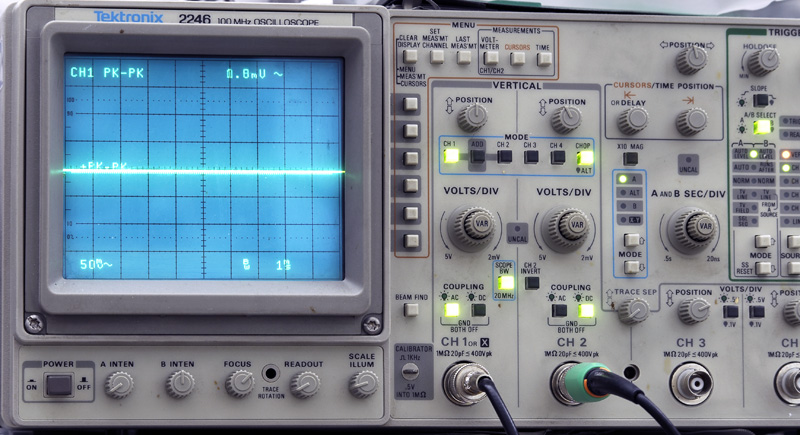
Tektronix 2246-1Y 100MHz 4-ch scope, precise analogue device, without sampling artifacts and approximation found in low-cost digital scopes. Oscilloscope was used for waveform capture, and noise measurements for further analyze. I will do peak-peak noise, level and timing signals measurements. This is 2+2 channel 100MHz analogue model. I use compensated 150MHz probe with internal 1:10 division and custom compensated probe for motherboards.
Logic analyzer using high-speed ALTERA Stratix FPGA - for PWM waveform observation and measurements. Logic analyzer will be used for digital measurements and digital bus capture, if needed. It's implemented via ALTERA SignalTap parametric module configured in ALTERA Stratix EP1S25 FPGA, able to analyze inputs with up to 300MHz. Logic analyzer uses Agilent 01650-61608 16-channel pod.
FLIR Thermacam B2 thermal imager
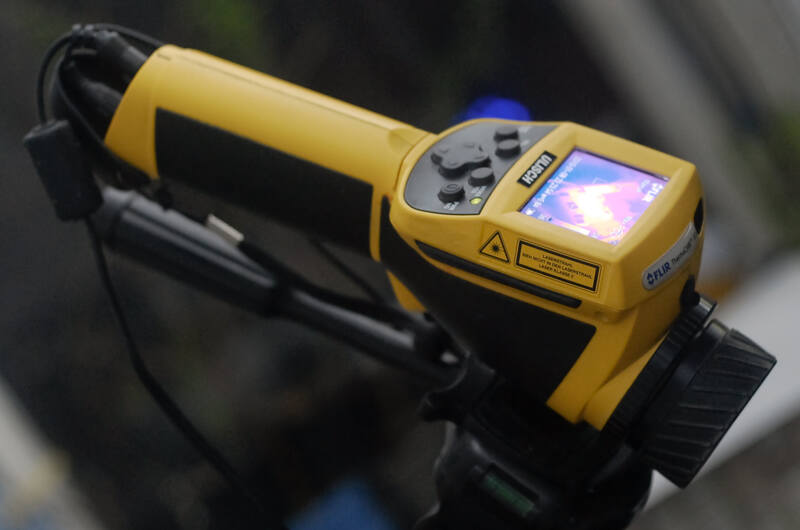
Nice tool to visualize thermal effects and hot sources.
FLIR thermal imager provides help thermal analysis of DC-DC circuits in Tier 3 testing.
Host PC with DAQ (National Instruments LabVIEW VI's)
Own-made xDevs.com Neutrino ES for DC power measurements
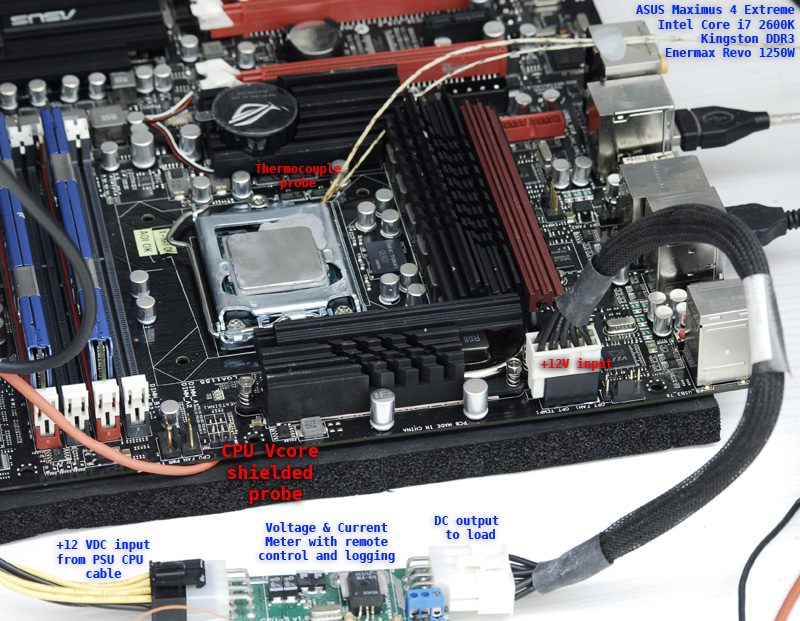
Host PC running NI LabVIEW collect data from my custom devices used during tests, process results and show measurements as comfortable and flexible GUI. This relates to DC power measurements and voltages monitoring for Sandy bridge platform.
My 8-channel digital logging meter was also used for adjusts.
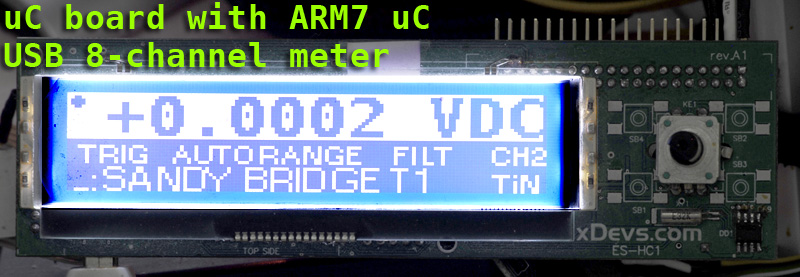 Boards overview
Boards overview
Before we continue with tortures and benchmarks, let’s take small tour to motherboards features and details.
ASUS Maximus IV Extreme

Color scheme is similar to other ROG series motherboards, consists of dark gray and red colors. All expansion slots for cards are PCI-Express,
four with x16 physical size (three of them have x16 routed lanes, and one x8), one x1 and last one is x4 with open side, allowing bigger cards
to be installed. NF200 is connected to second and fourth slot. Slot latches are robust big dual-side type, which are not always comfortable to use
with tight multi-GPU setups.
Board have lots of headers for fans, two near 24-pin ATX power input, two near DIMMs, two more near PLX bridge, and two above CPU power circuitry.
Total amount is eight fan connectors, so overclockers will enjoy that. All of them are 4-pin type.

Board dimension is 305 x 269, what is called Extended ATX, so better do double check if it fit specific
enclosure. I will run everything caseless, so zero issues here.
Gigabyte P67A-UD7
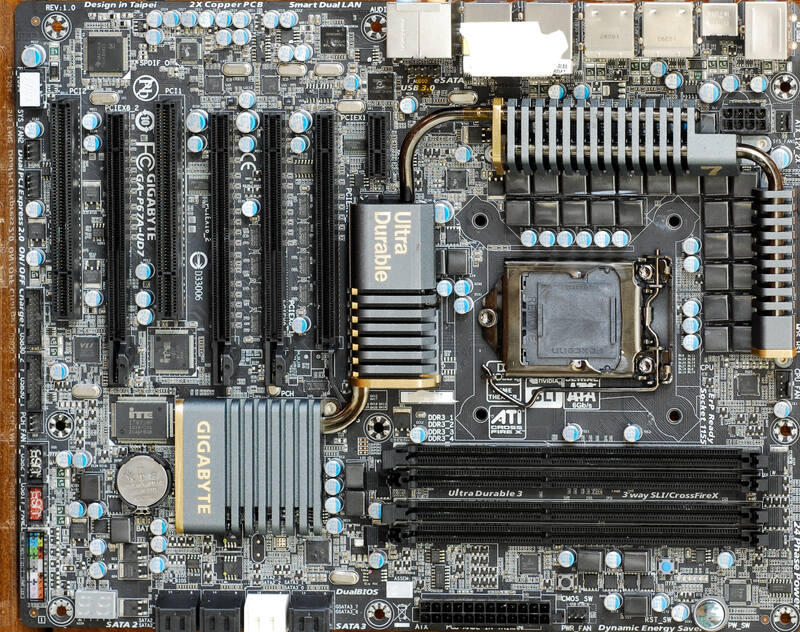
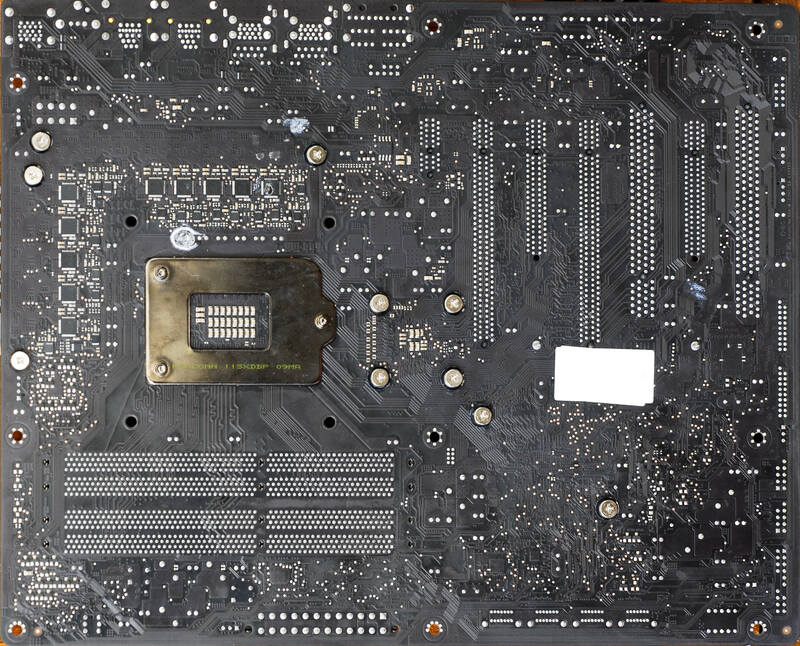
Gigabyte board is standard ATX, 305 x 244, so it can fit most cases easy.
Unlike Maximus, P67A-UD7 have four physically full-size PCI-Express slots, one x1 slot, and pair of legacy PCI maintained by ITE hub.
There 6 fan connectors onboard, two of them 4-pin type, rest are legacy 3 pin.
Both boards are based on Intel P67 Express chipset, with four DDR3 slots, just like most P67 boards. Both are using 8-layered PCB.
Both have debug POST 80h indicator, total eight SATA ports, some including SATA3 support, Power/reset buttons and few LEDs for monitoring.
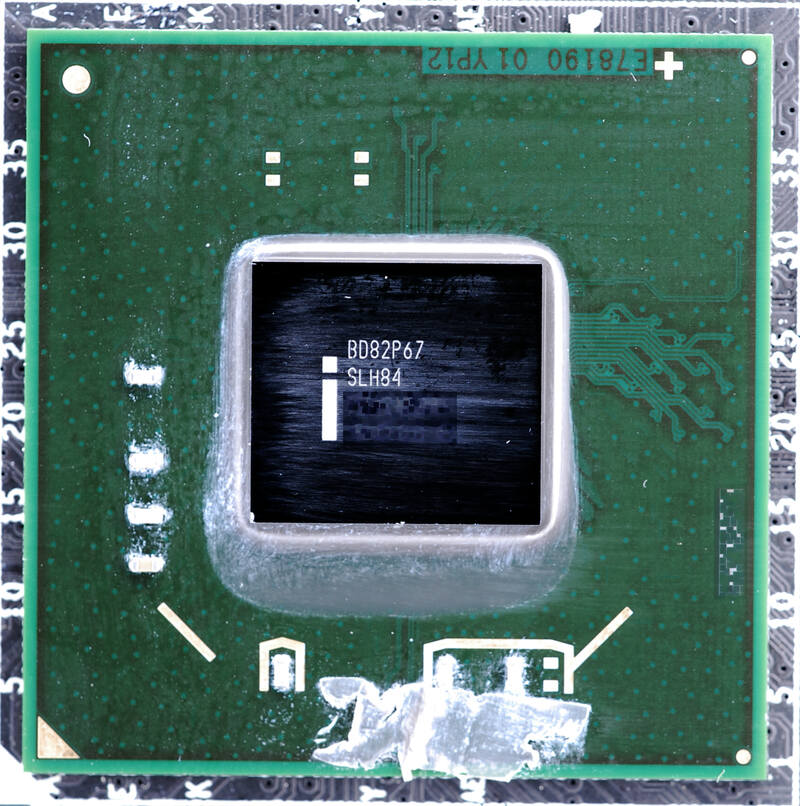
Expansion connectors
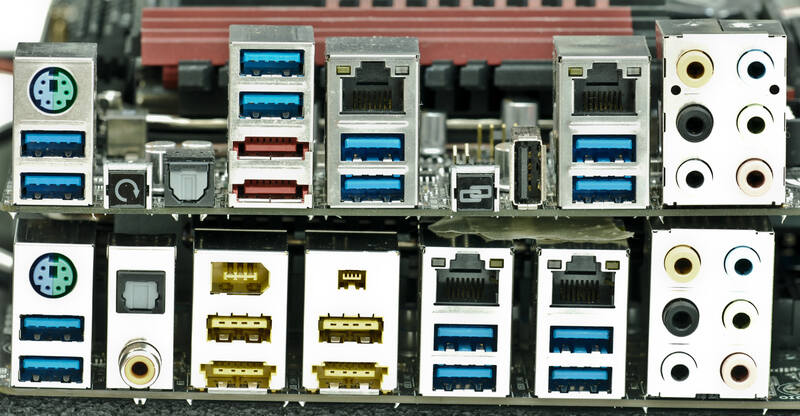
Rear I/O looks full of connectors, with nice bluish SuperSpeed USB 3.0 ports, dual GbE ports, sound, FireWire and SATA connectivity. ASUS board is on top part of image, Gigabyte - bottom. There are also CMOS clear button and remote overclocking button with featured port (vertical standing USB port). If remote OC not needed - USB port may be used just as normal one.
Circuitry analysis
Power convertors
Both boards use variety of different power DC-DC convertors. I will introduce them one by one.
CPU VCC power - this is main CPU power circuitry which provide juice for CPU cores together with integrated GPU.
ASUS Maximus IV Extreme board
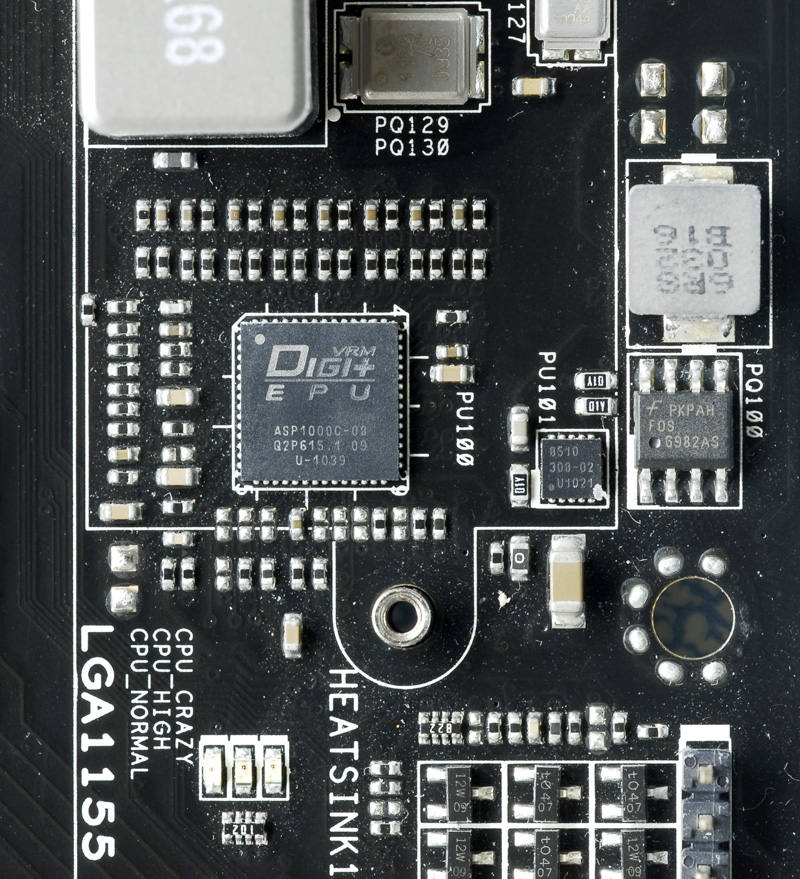
Based on proprietary "ASUS Extreme Engine Digi+" chipset.
Actually it uses CHIL drivers (
CHL8510) for phase control, so looks like it's CHIL PWM solution adapted for ASUS use. Convertor is built using high-frequency 8-phase design with synchronous buck topology with extensive voltage and current control. This advanced VRM is able to run at high switching frequency near 1MHz.
Each phase consists of four (one pair for high-side, second pair for low-side) Infineon mosfets in advanced metal CanPAK packages. These transistors have very low resistance in active state, thus reducing parasitic power loss and enhancing efficiency. Also metal package allows much better thermal dissipation, lowering operation temperature. There is
good public illustration compared to SO-8 MOSFETs. More efficiency and better cooling mean that more power can be transferred to load without critical overheating, which is essential in case of overclocking. Such components are already seen on high-end motherboards and videocards, like Rampage III Extreme, custom-designed Fermi videocards.
Output inductors used seems like metal alloy Trio LM-68B, 0.68uH with rated current 28A per each and 1.38 mOhm DCR.

Each phase is controlled by dedicated driver in small lid-less package nearby. Drivers converting PWM signal from main power controller to driving signals for discrete MOSFETs. Using driver chips allows engineers to simplify design of high-current switching power supply by reducing length of driving signals, and adding more sophisticated control and protection circuitry to overall system. Back side of VRM covered by aluminum heatsink plate, just for better thermal.
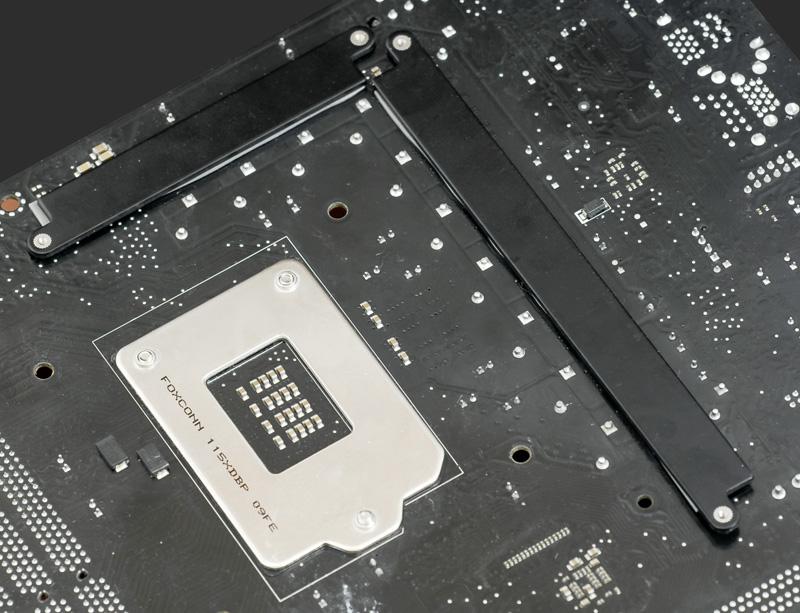
Power from input +12V rail decoupled in four low-esr input capacitors, 270uF 16V each. Output power plane for CPU Vcore have total bulk capacitance about 5820 uF, consisting from 6 low-esr aluminum can capacitors (820uF 3V each) and one NEC/TOKIN Proadlizer PF/A cap with 900uF 2.5V rating. These polymer capacitors help to reduce fast transient spikes and have very low ESR, about 1.5 mOhm by spec.
This voltage adjustable from BIOS, in range 0.800 to 2.155V, with 5mV step.
CPU VCCSA power
System agent is a part of Sandy Bridge CPU which controls communications, in a way like legacy northbridge did. SA is not as power hungry device as CPU cores so it take power from simple synchronous buck DC-DC based on uP6203B and pair of phases. Each phase feature
NXP PH5030AL NFET and
PH9025L for high side. Both FETs able to push more than 60A.
Input capacitor - 2 x 270uF 16V, output - two 820uF 3V caps. Each phase use small 1uH inductors for energy storage.
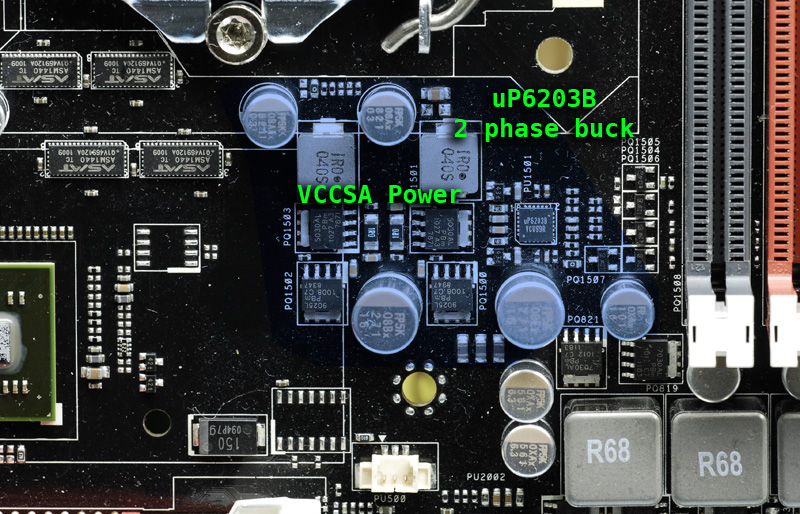
This voltage adjustable from BIOS, in range 0.800 to 1.7V, with 6.25mV step.
CPU VCCPLL power
Phase-Locked Loop autotunes adjustable frequency source to have stable and precise clock output. It is used widely in digital systems to multiply/divide clocks, filtering and clock recovery. Its power should be as clean as possible to have highest stability achievable. PLL's don't need lots of energy so on ASUS Maximus IV Extreme it's powered by small DC-DC.
This voltage adjustable from BIOS, in range 1.200 to 2.2V, with 6.25mV step.
CPU VCCIO power
CPU internals like cores or GPU use low voltage for operation, but output signals usually driven at 1.5-1.8 or more volts, like DDR3 memory chips or PCI-Express signaling. So I/O voltage is taken externally and used as base level for external interfaces. This voltage was often called VTT/QPI, VTT/DRAM etc on previous P55 and X58 chipsets. VCCIO usually affects DRAM overclocking and memory controller performance, like in older platforms before Sandy Bridge. It's fed by quite decent 2-phase synchronous buck controlled by uPI Semiconductor uP6203B. Except the DC-DC controller, both phases use same components as main Vcore VRM. Input capacitors include two 270uF LowESR 16V and output is decoupled by 3 x 820uF (2460uF total).
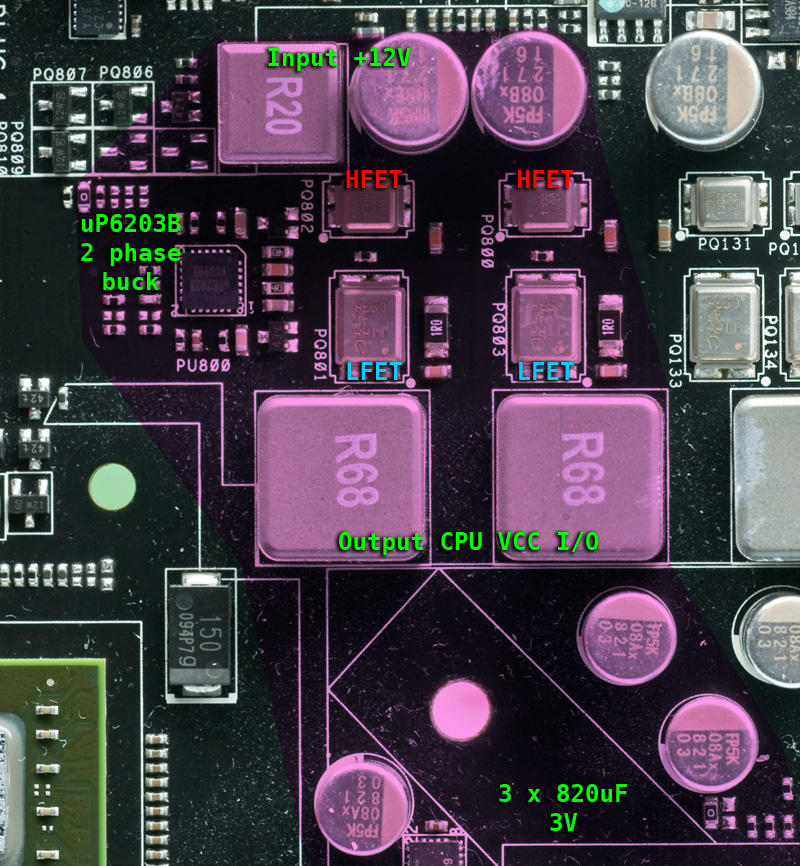
This voltage adjustable from BIOS, in range 0.800 to 1.7V, with 6.25mV step.
So there are quite a few main power sources for Sandy Bridge CPU's.
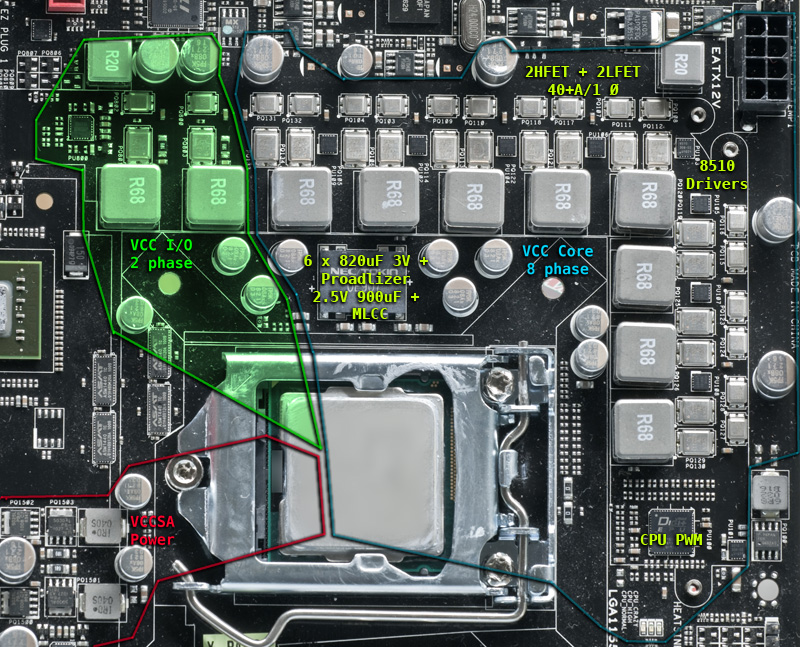
DRAM VCC power
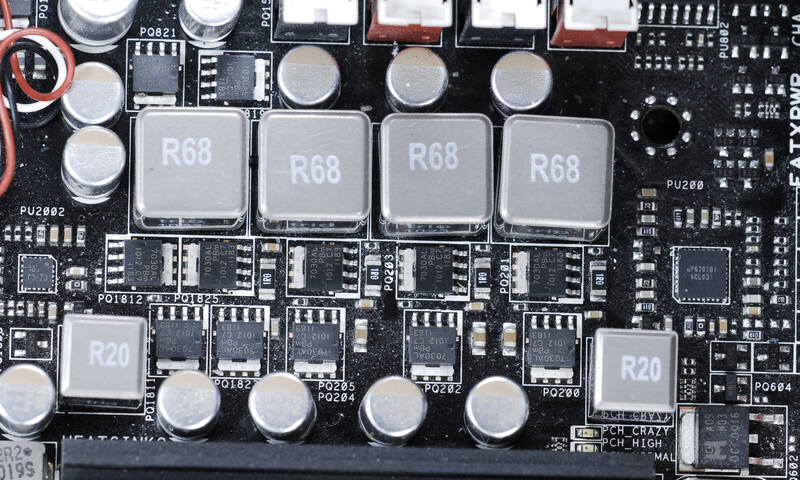
Memory sticks take power from triple phase power supply with 0.68uH coils, powered by
PH7030AL + PH7030AL NFETs. Each FET can push 50+ A current. Power supply controlled by uPI uP6207. There are four input capacitors, 560uF 6.3V each, and eight 560uF 6.3v for VDIMM plane. Total decoupling capacitance for memory is near 4500uF, making DIMM voltage solid and steady.
This voltage adjustable from BIOS, in range 1.200 to 2.2V, with 6.25mV step.
NF200 power
Use single phase maintained by Richtek RT8100A. Phase feature doubled PH7030AL pair (2 FET for high-side and 2 for low-side) and 0.68uH inductor similar to those used in VDIMM, VIO and Vcore convertors.
Nice feature present on ASUS Maximus IV Extreme - power disabled by hardware for NF200, so it will not produce any heat air when not used. Until you put PCI-E card into second or fourth PCI-Express slot - it's totally disabled.
This voltage adjustable from BIOS, in range 1.1925 to 1.5105V, with 13.25mV step. Standard voltage level for NF200 is 1.2 V.

PCH power and PCH PLL
Similar to CPU PLL, but used for clock conversion in PCH.
Use two RT8100A-based single-phase convertors, with pair of 4800AGM N-channel FETs in SO8 package. No need for insane power here.
Inductors used in both convertors are 2.2uH.
PCH and PCH PLL voltages adjustable from BIOS, in range 0.80825 to 1.70925V, with 13.25mV step.
PLX Bridge PEX8608 uses APM7120 controller for its power. In rest it's same as PCH power power solution. There is pair of 560uF bulk caps for decoupling near by. It's voltage not adjustable from BIOS.
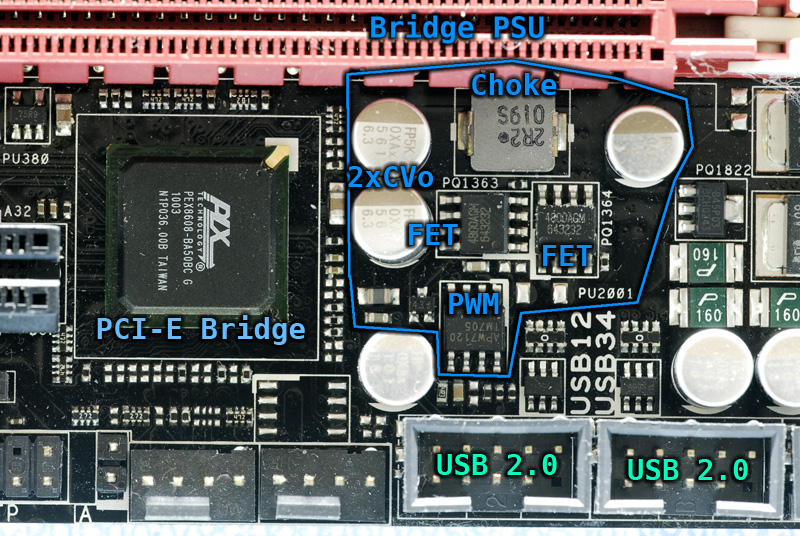
Extra onboard controllers, like integrated sound-card, Super I/O chip, Ethernet chips, SAS/SATA, USB controllers usually need small amount of power, so they fed by simple linear low-drop regulators (LDO's) similar to LM1117. Output voltages usually vary from 1.2 to 3.3V.
Add-on ports and controllers
Both boards have USB 3.0 NEC hub, well known already by P55/X58 boards with SuperSpeed ports.
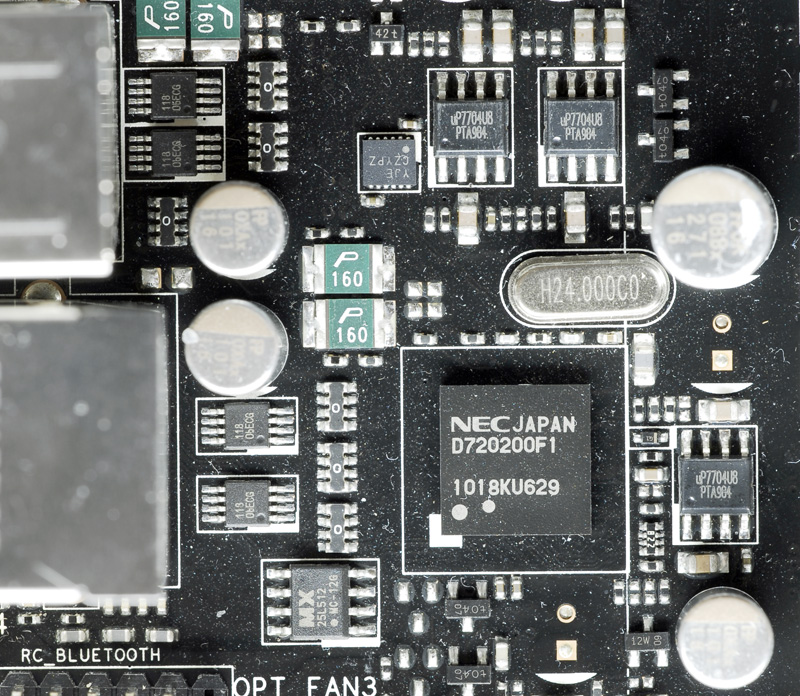
ASUS also choose to use quad-port
VIA VL810 hub switch made with 80nm node tech process.
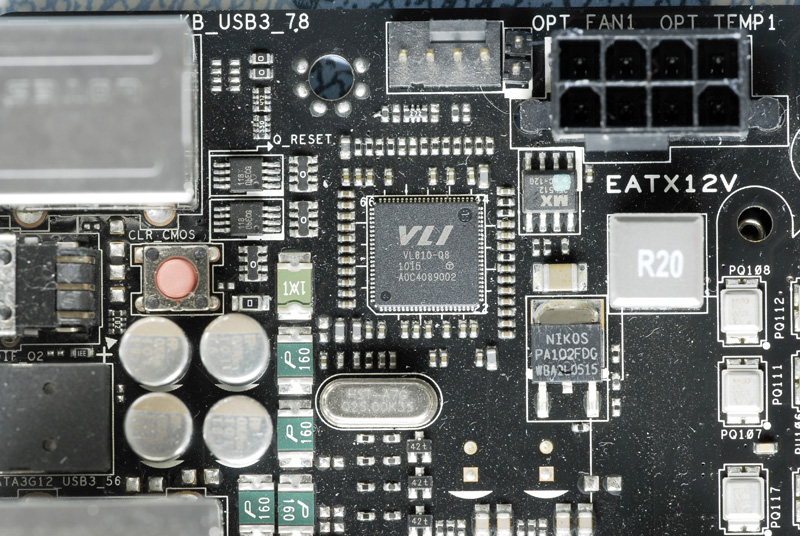
 acebook
acebook






 .
.






















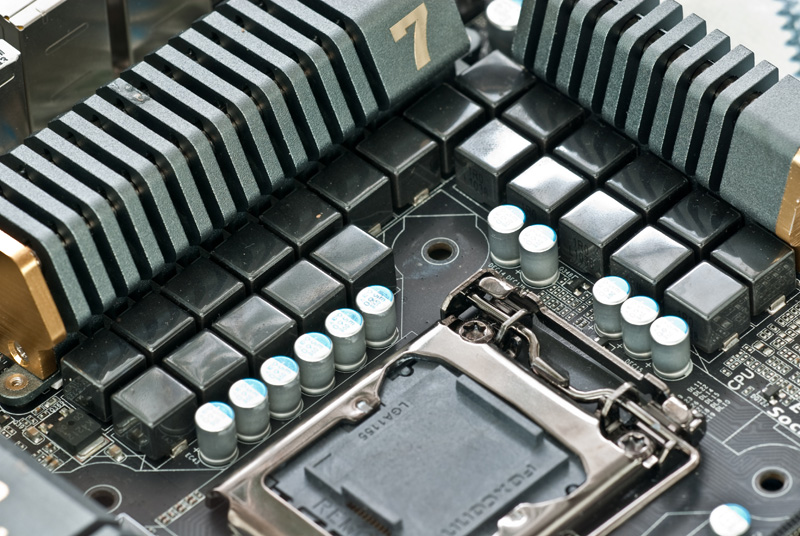
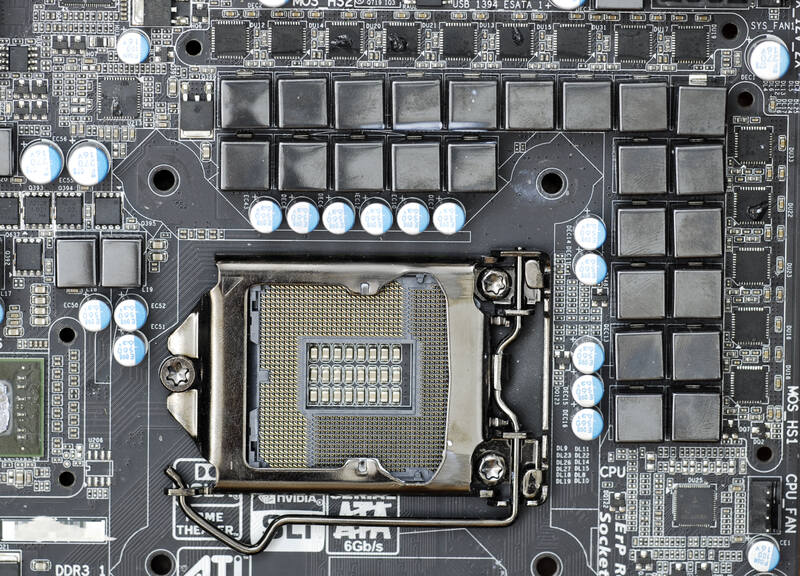
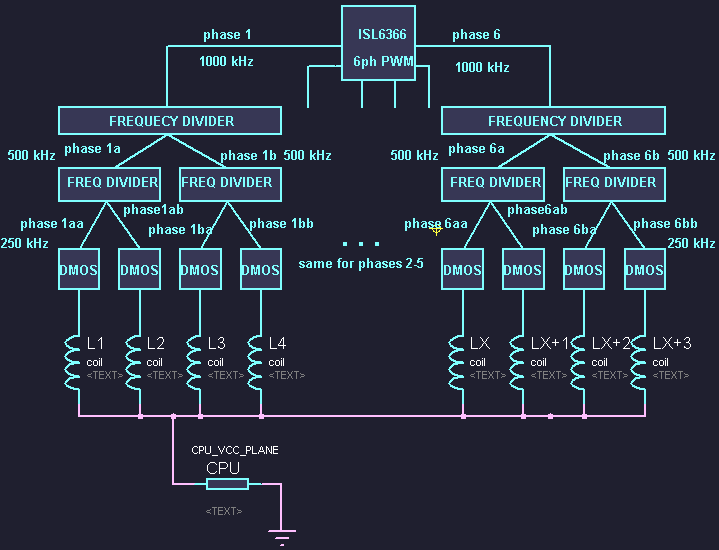
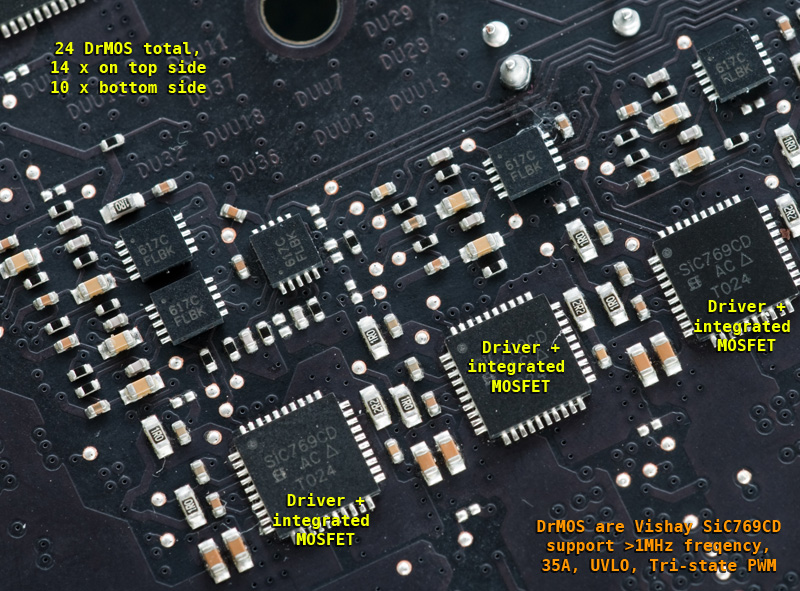
 .
.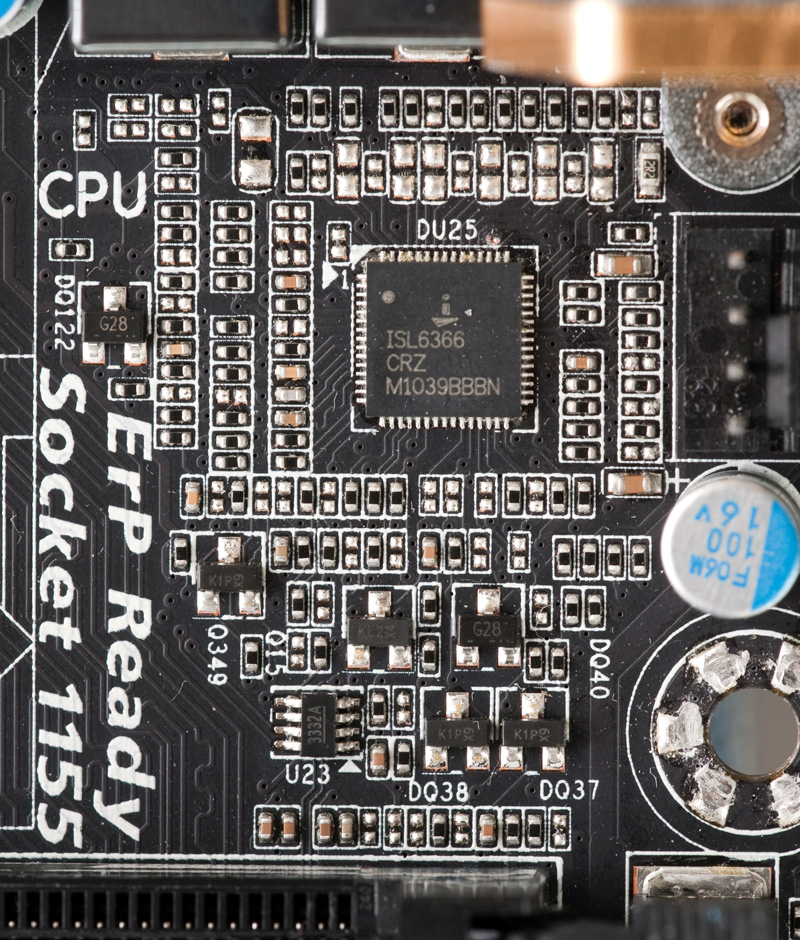
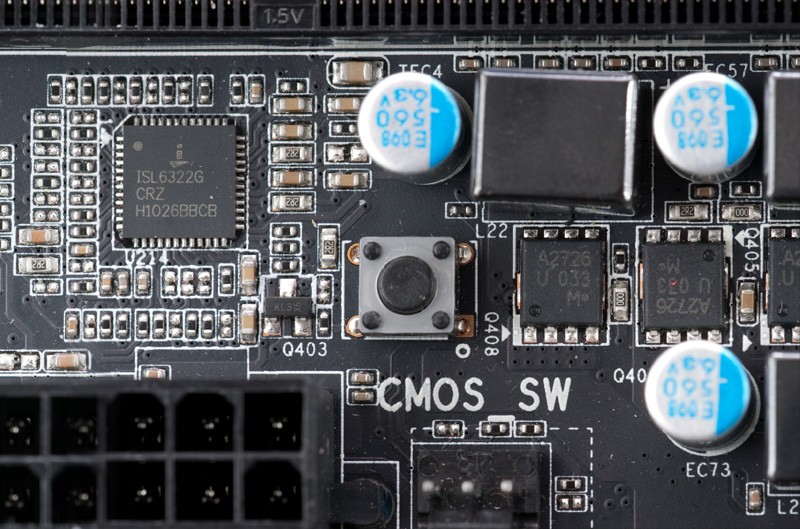
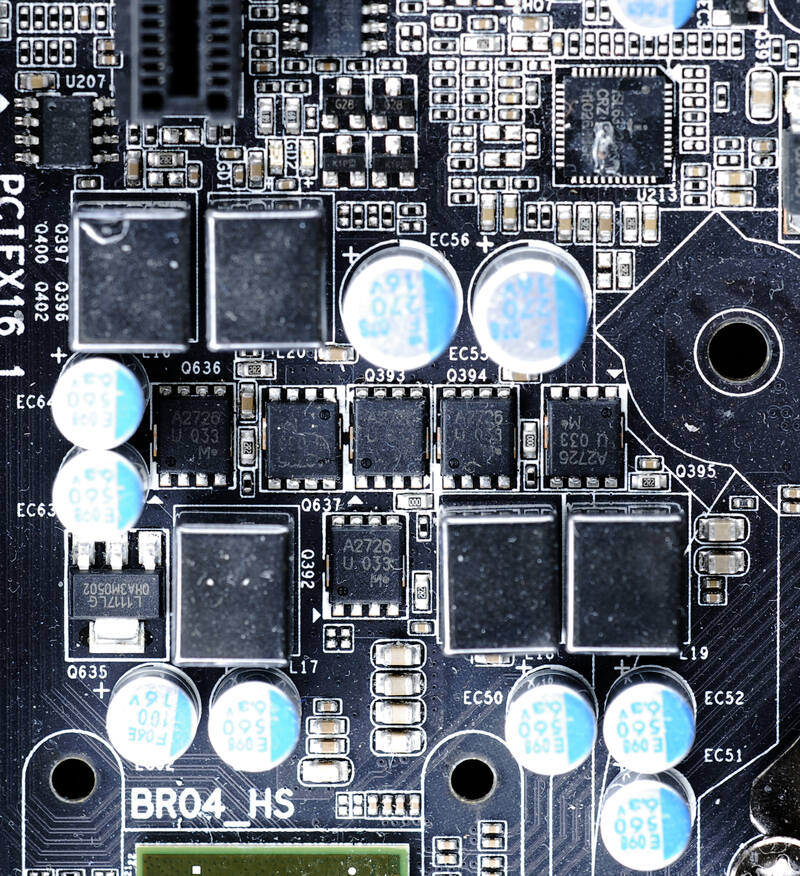
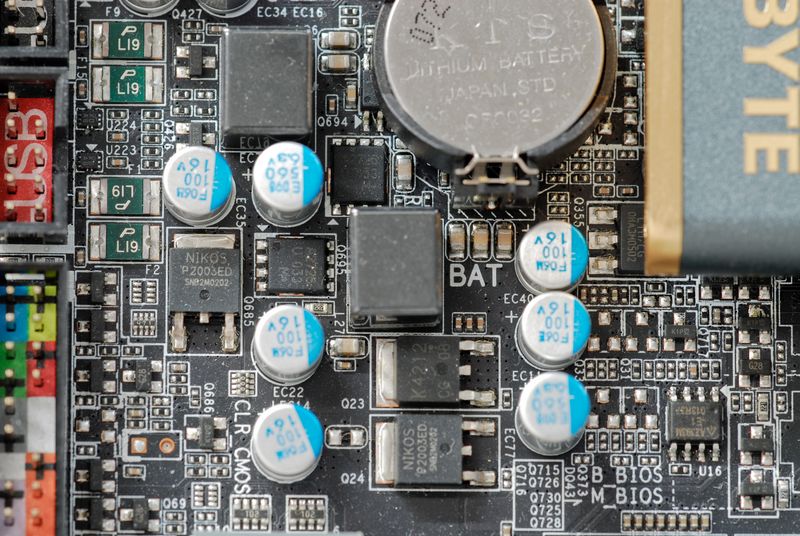
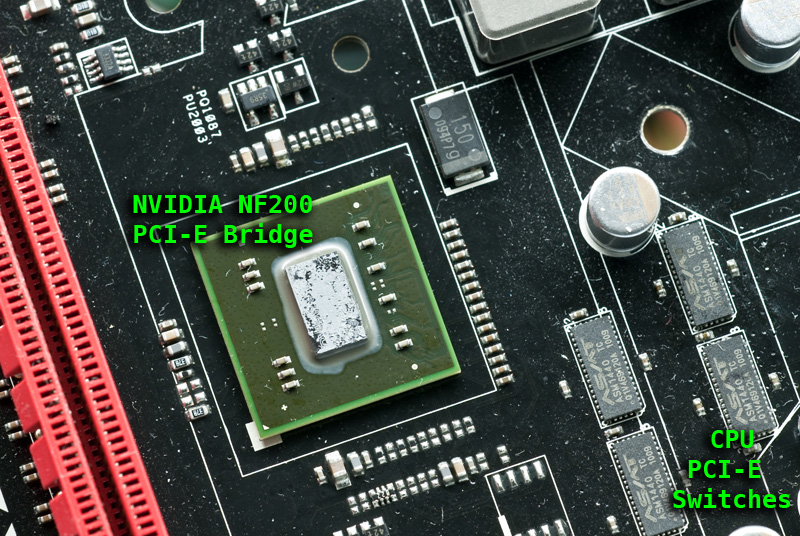
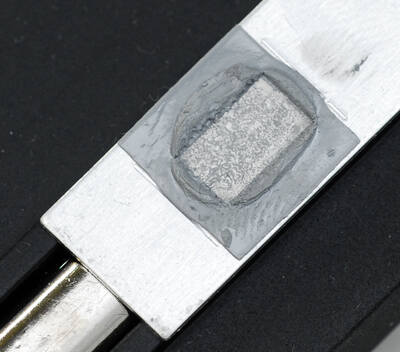
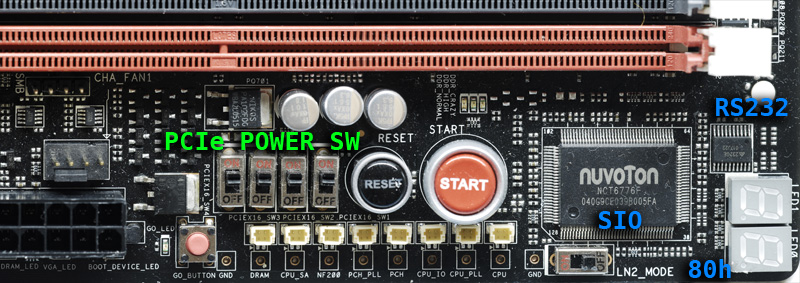
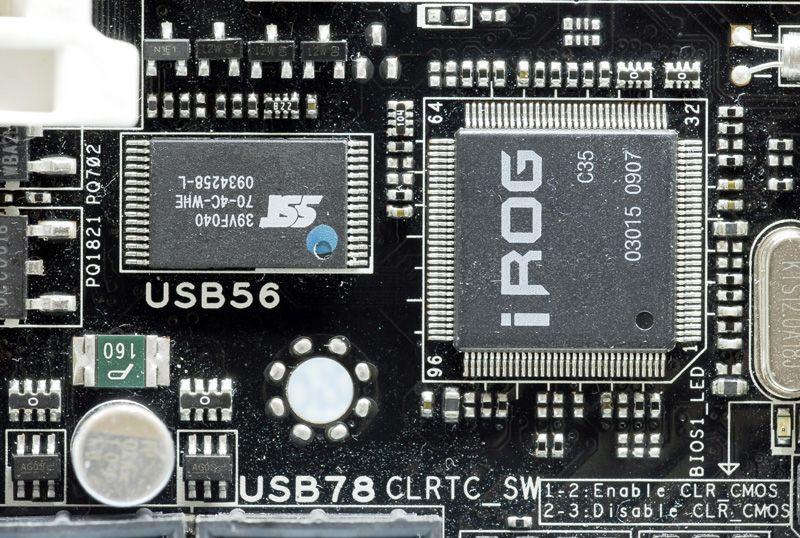
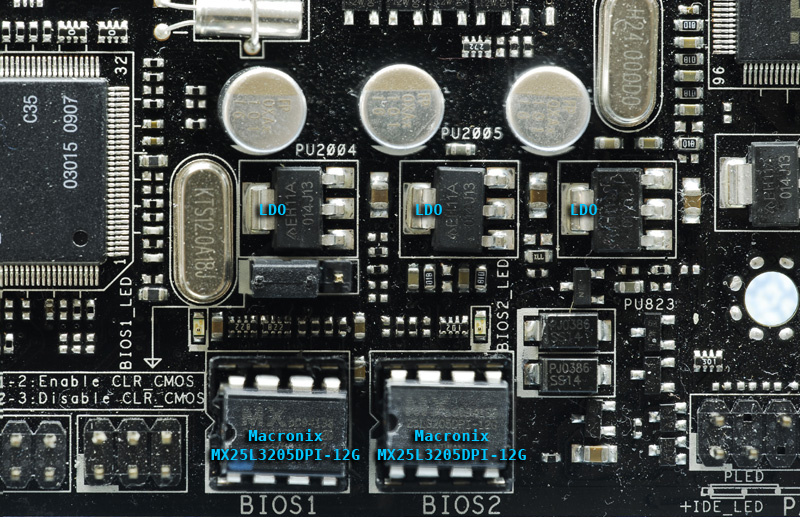
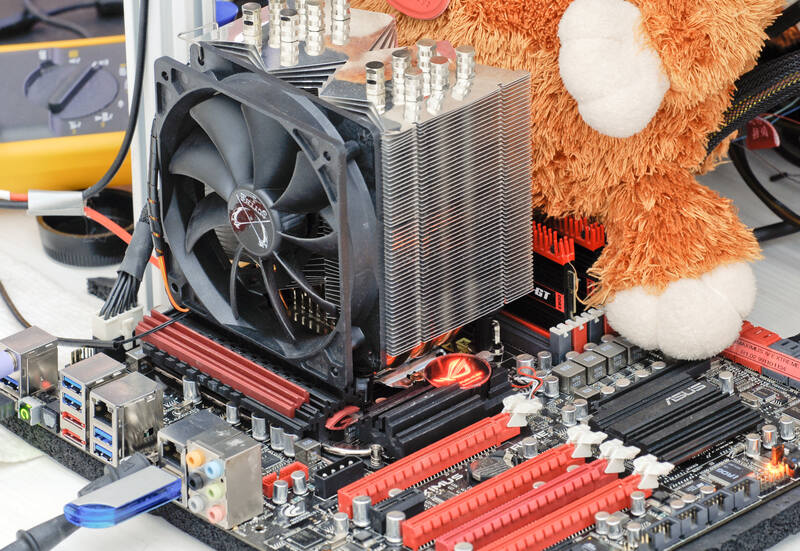
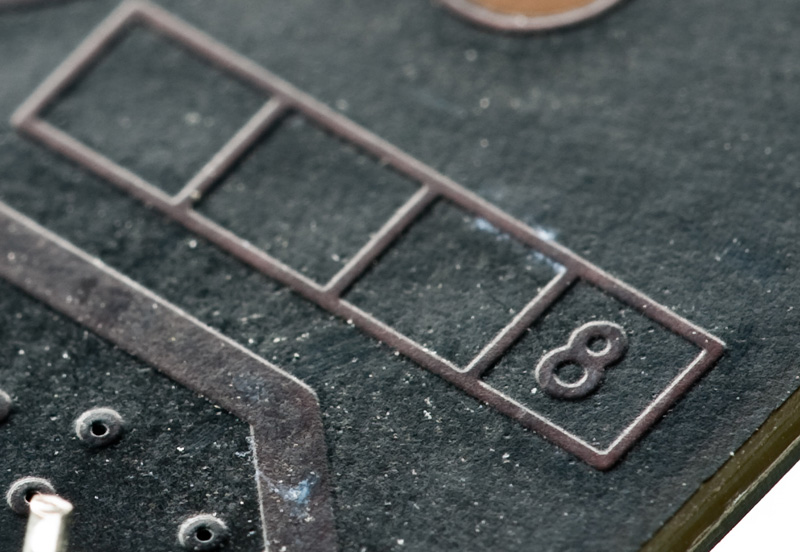

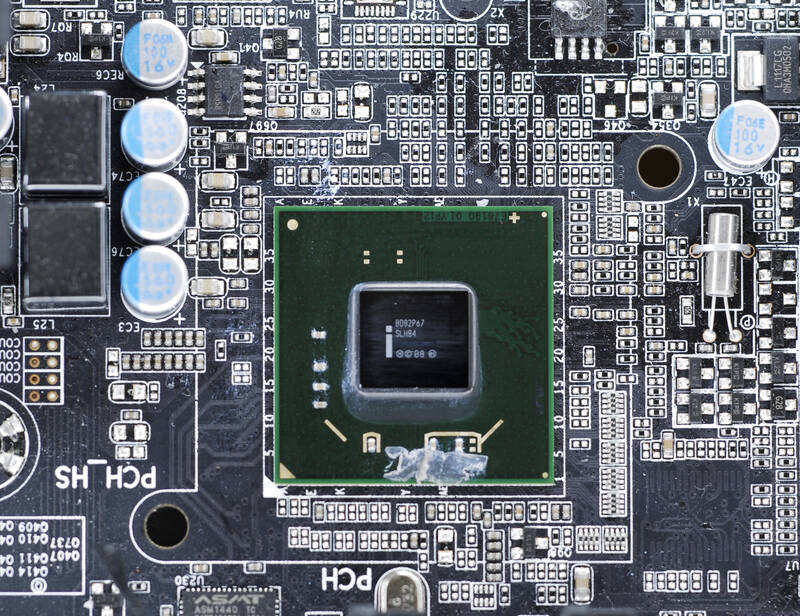
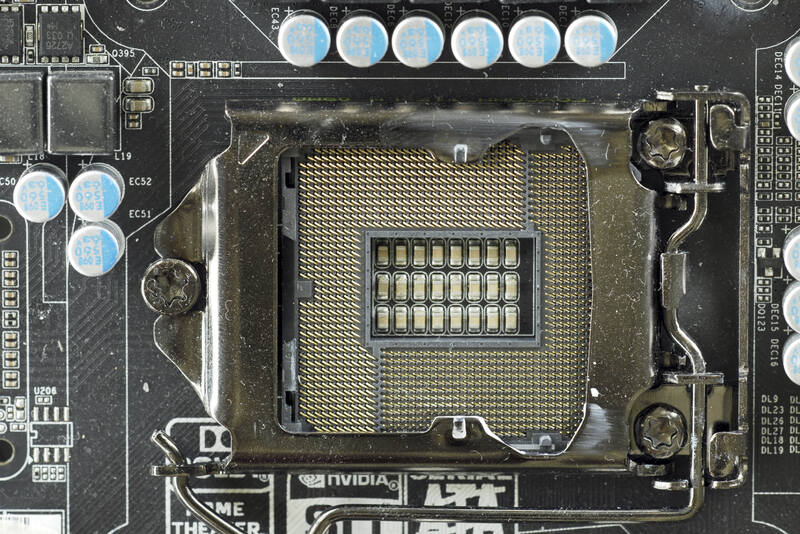
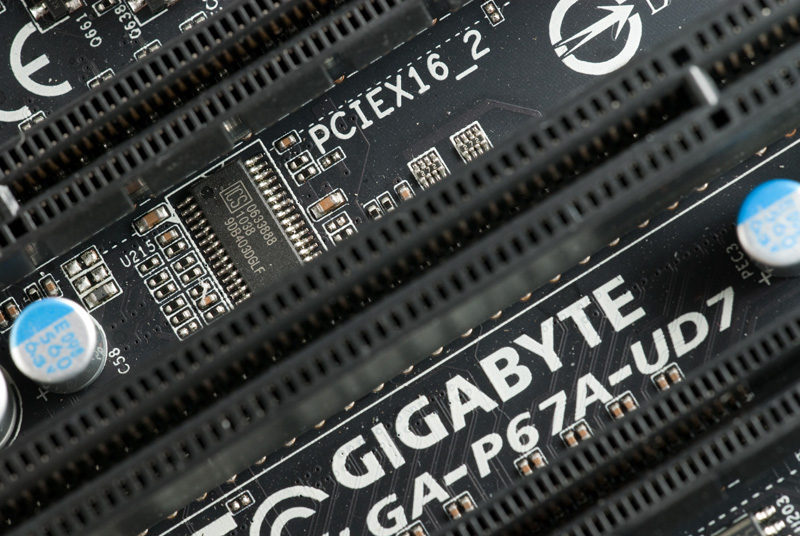
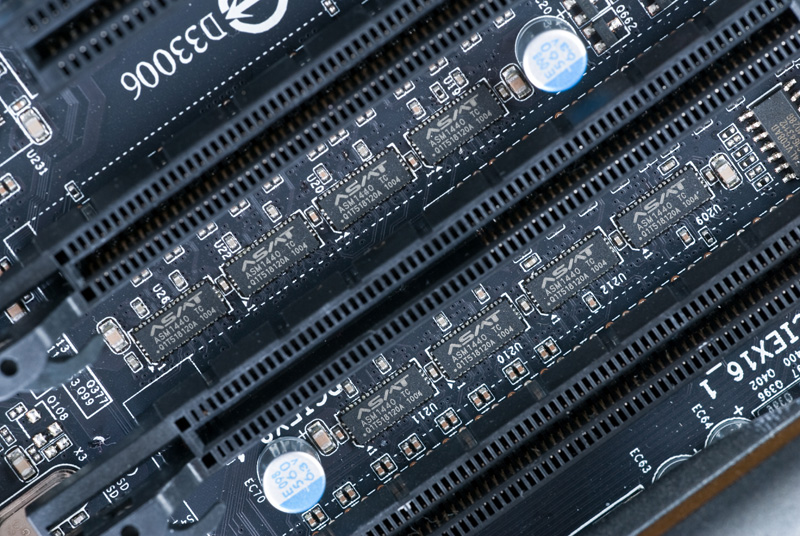
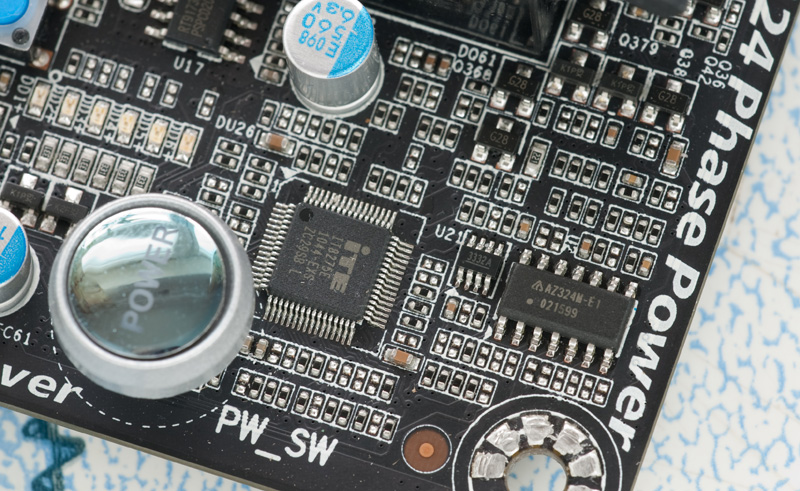
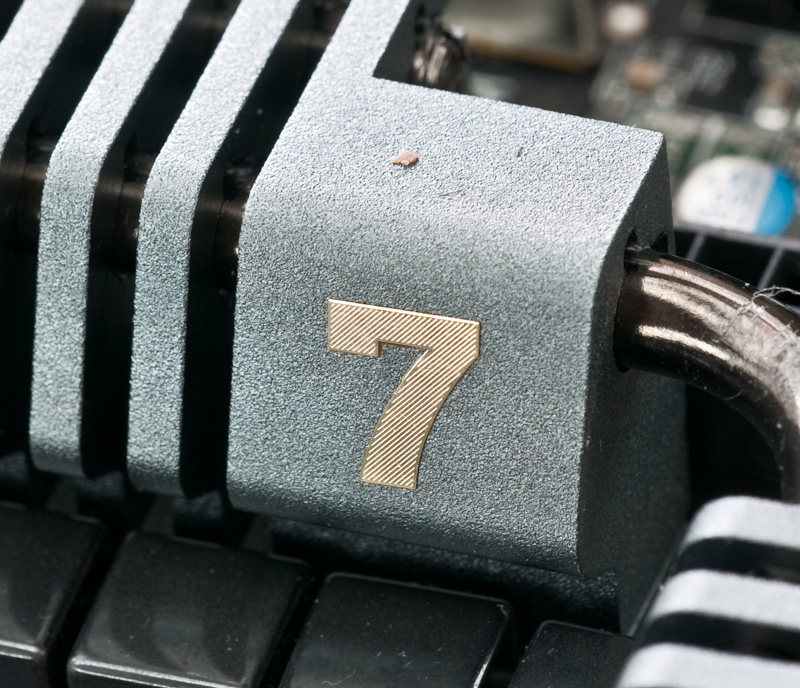
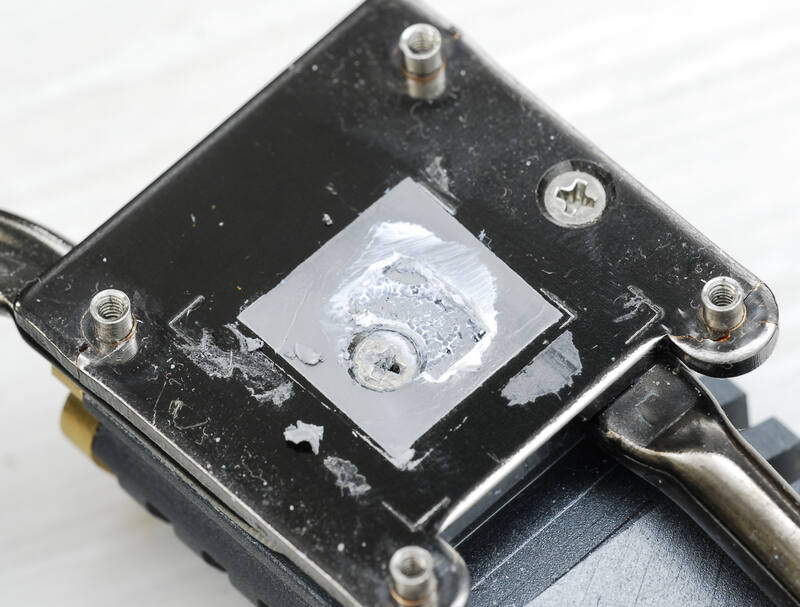

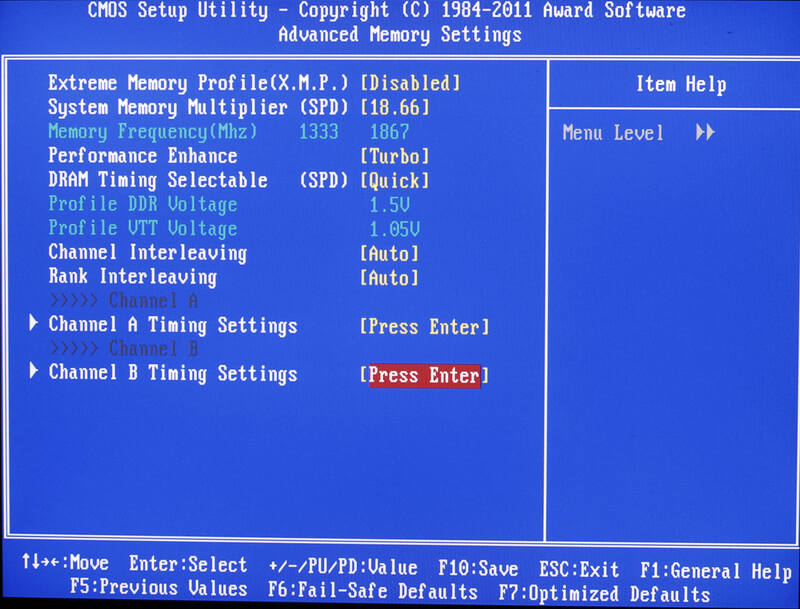
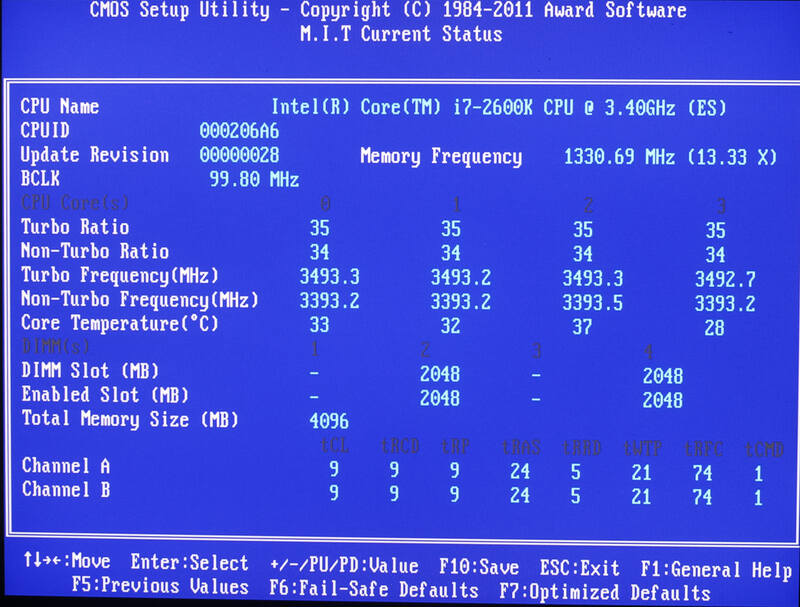
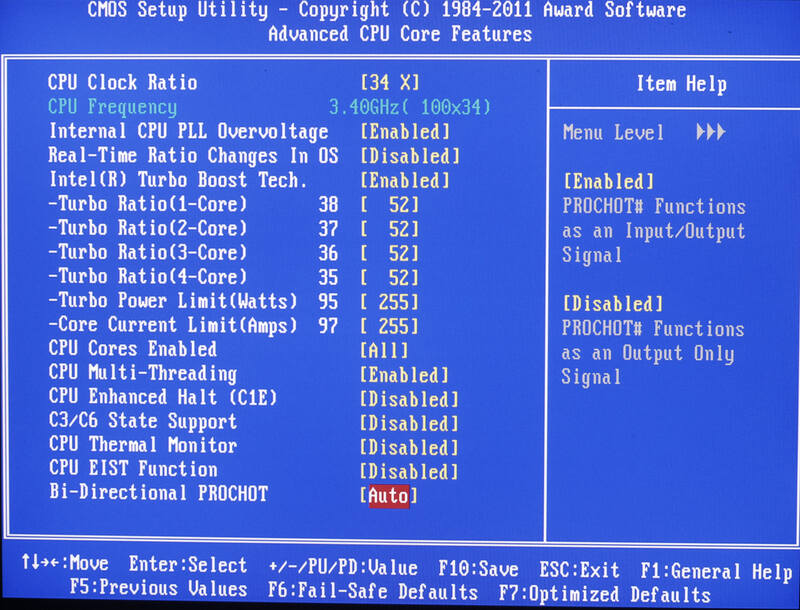
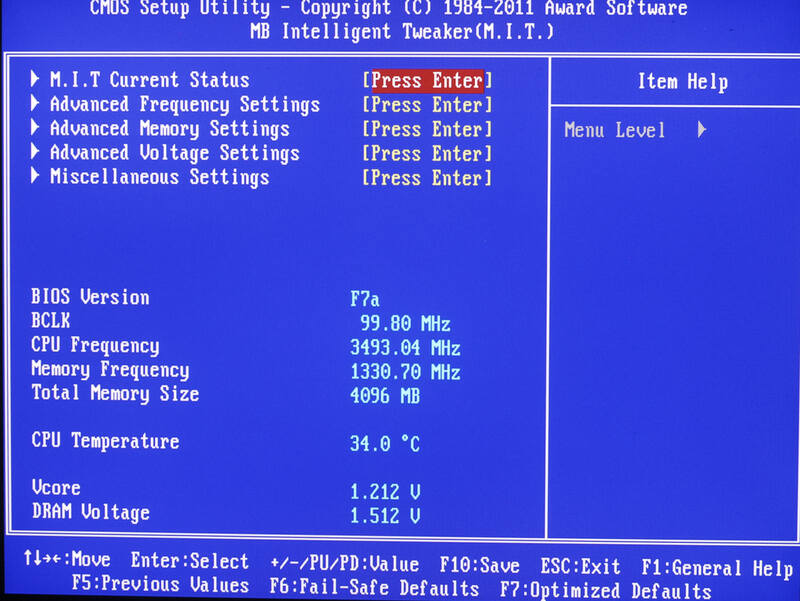
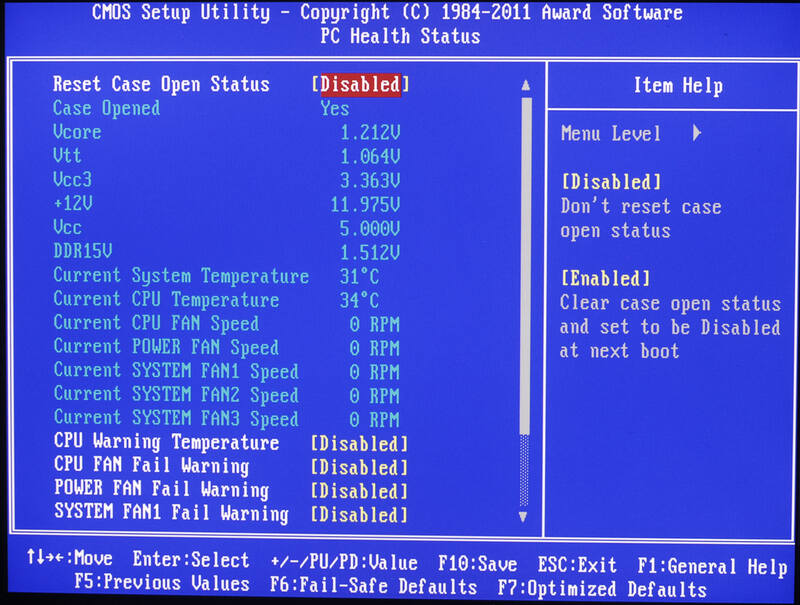
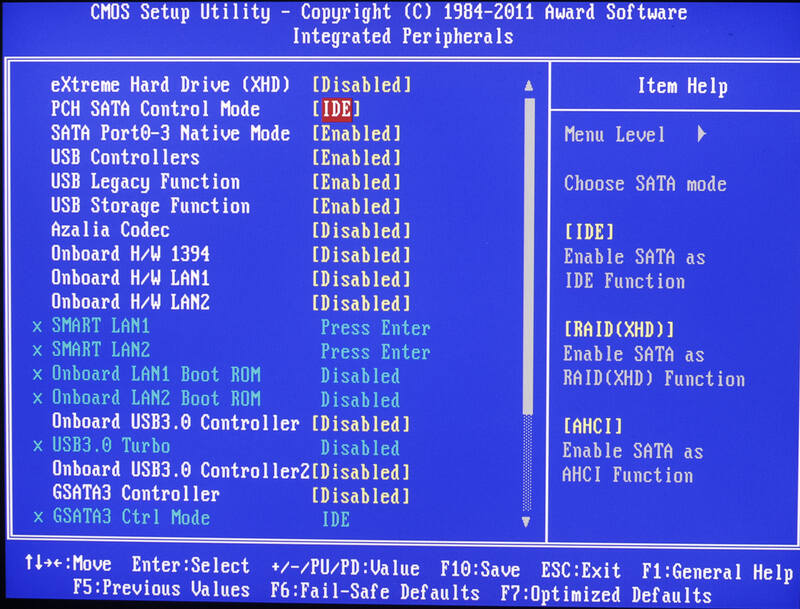
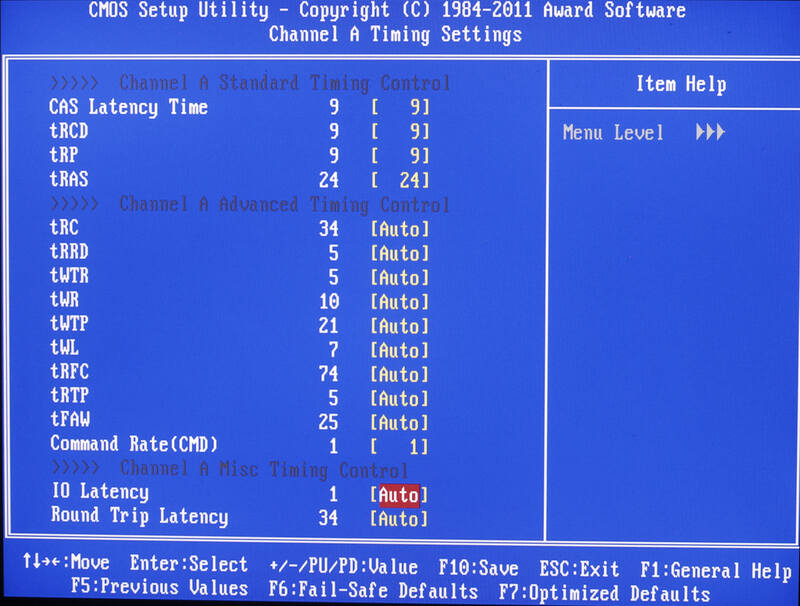
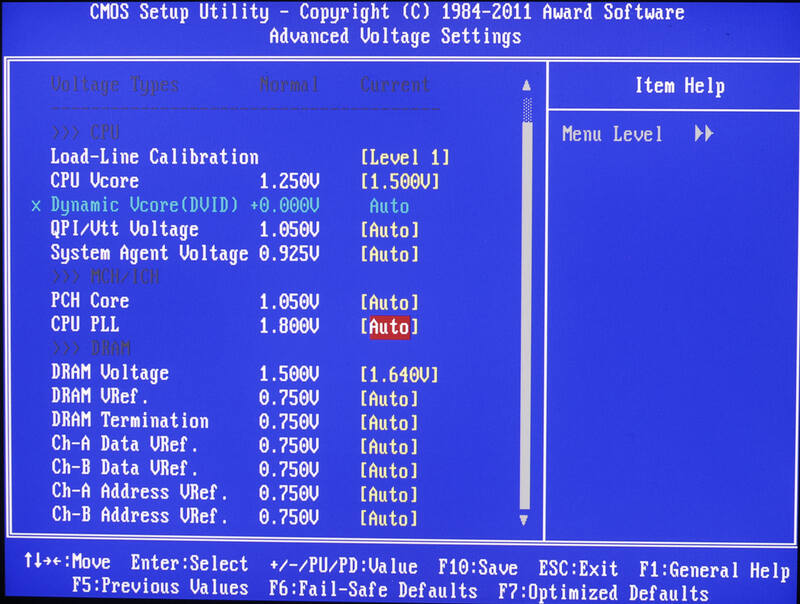
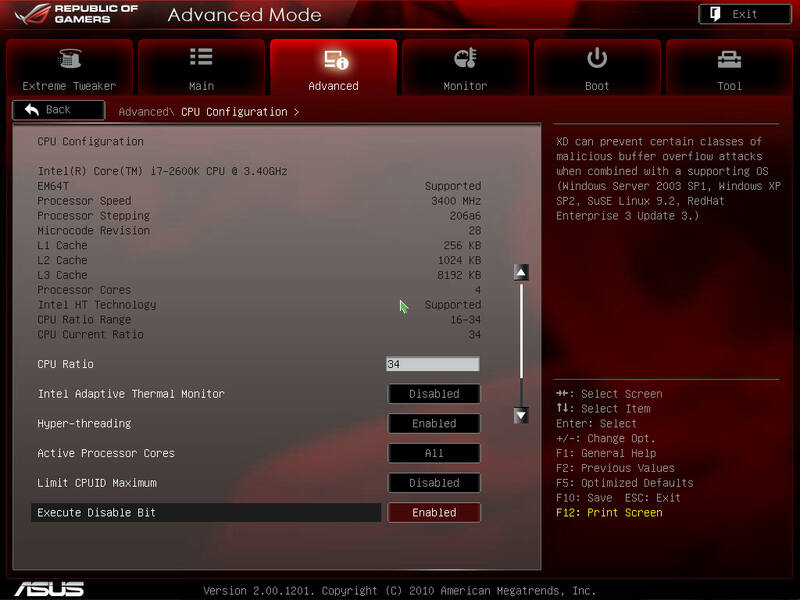
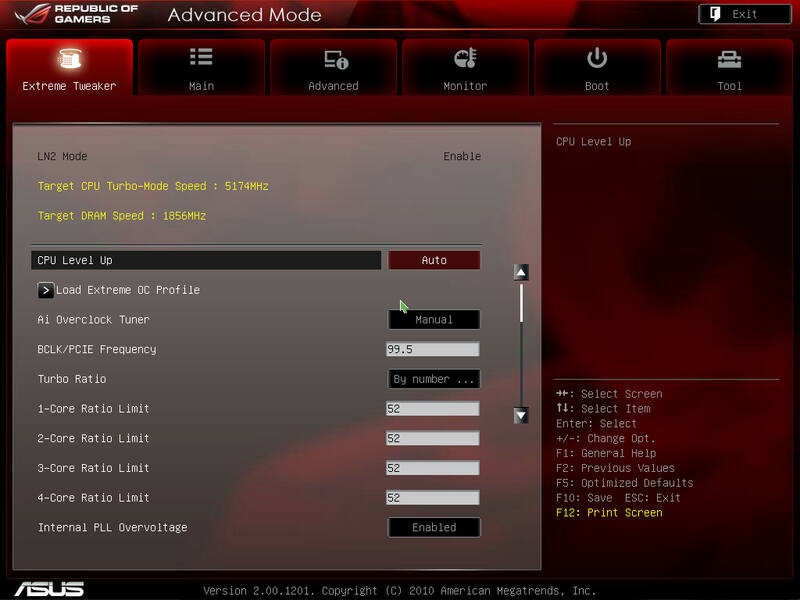
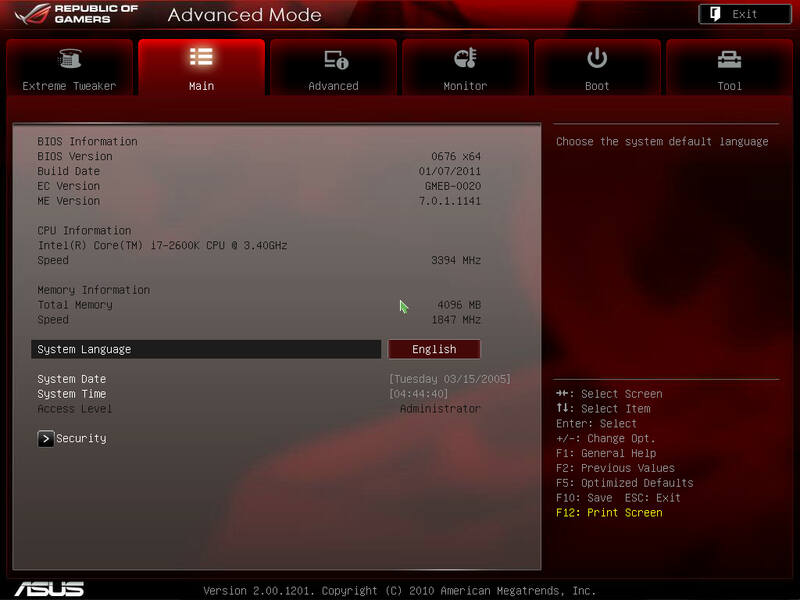
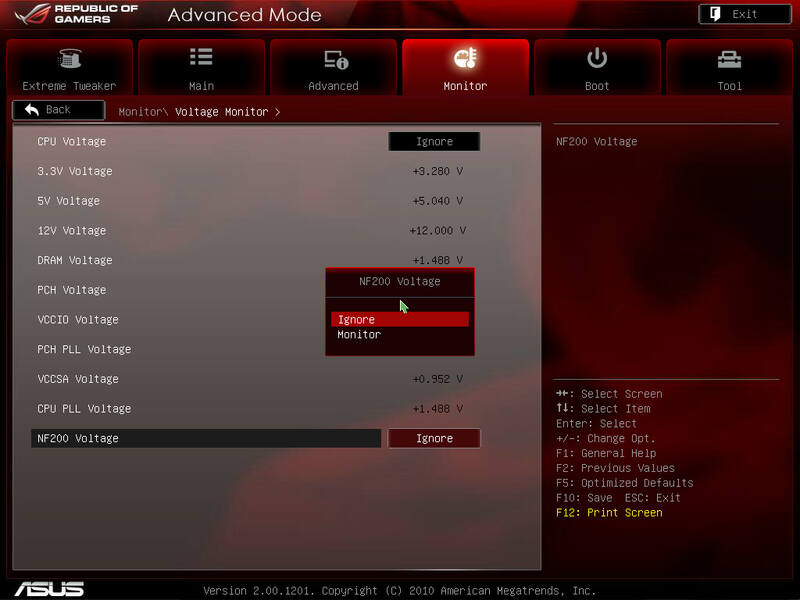
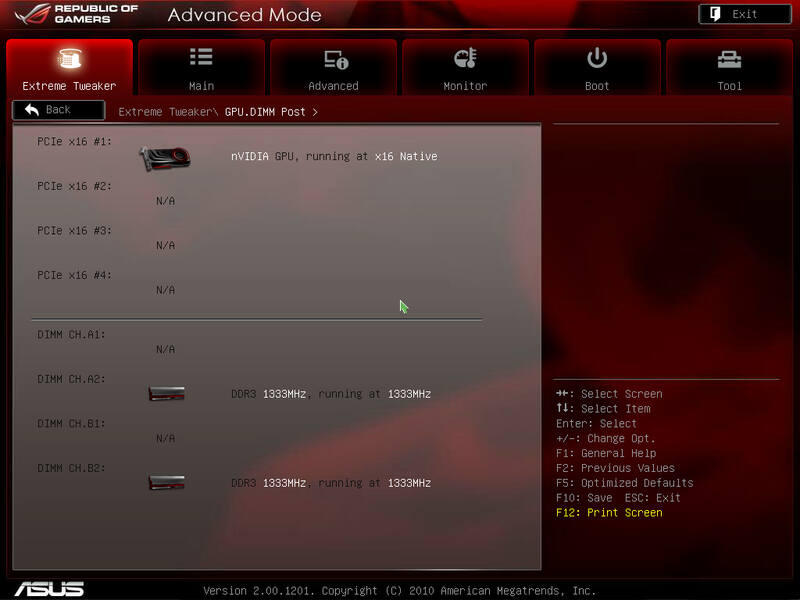
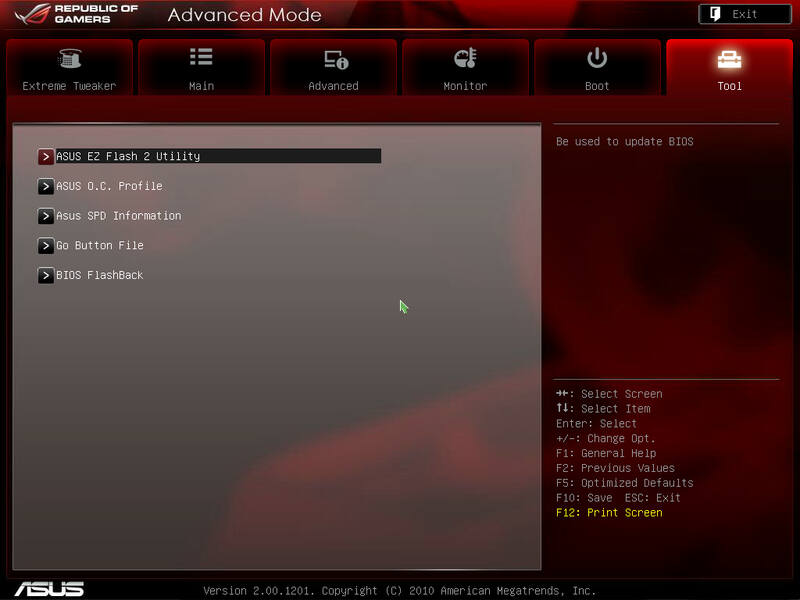
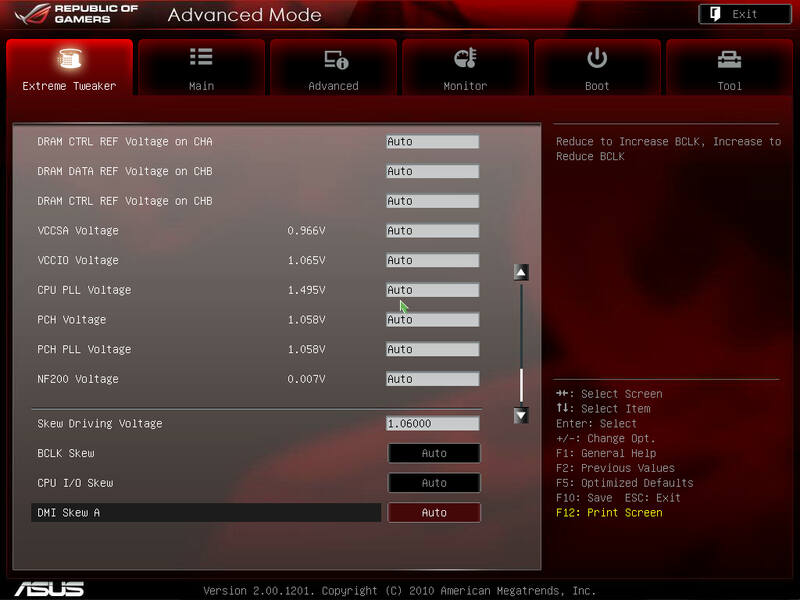
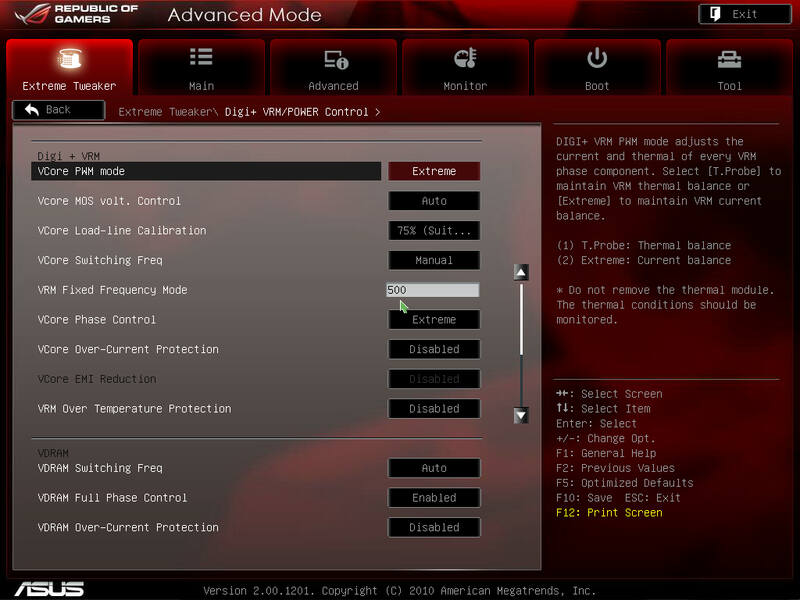
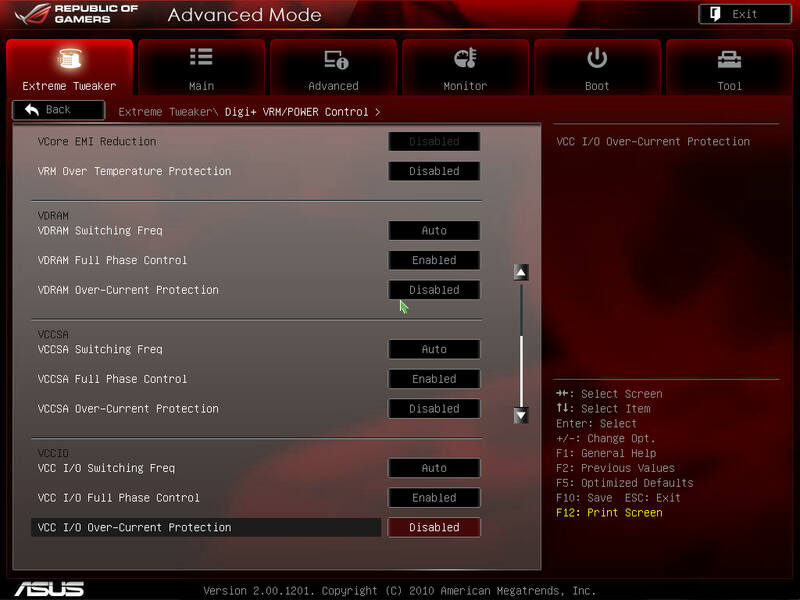
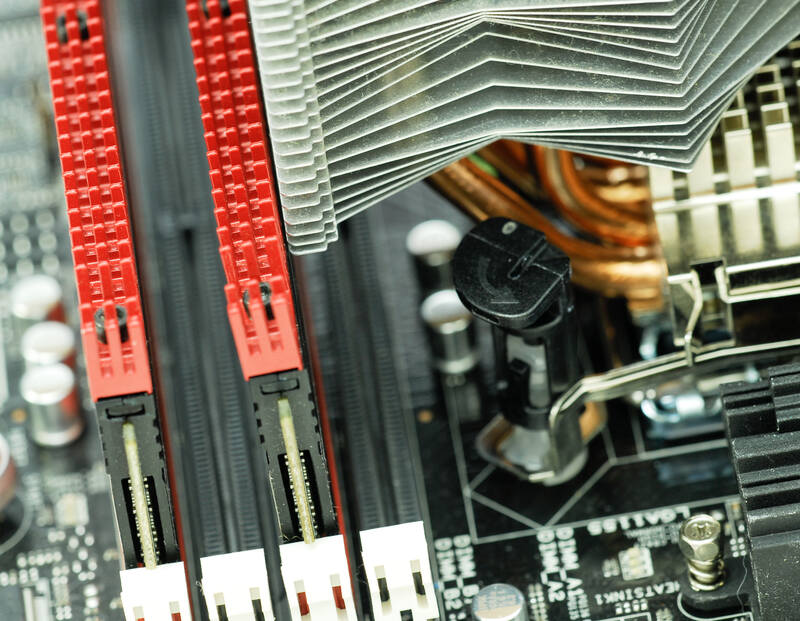
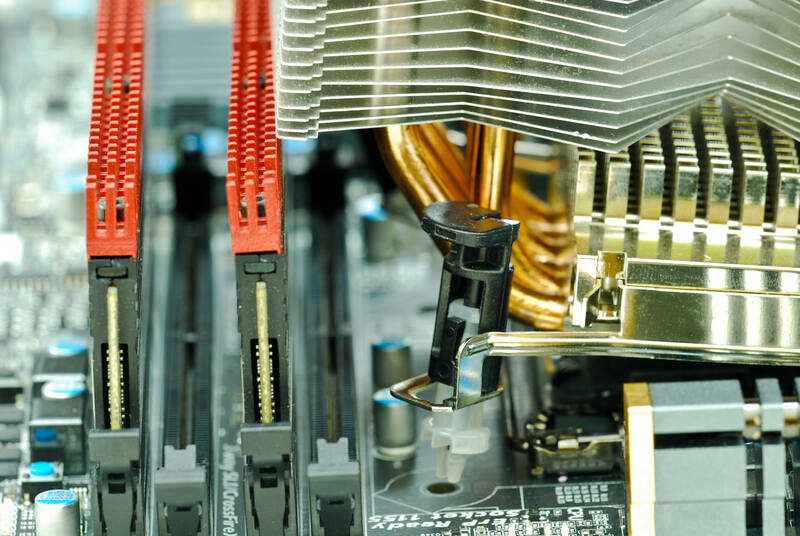
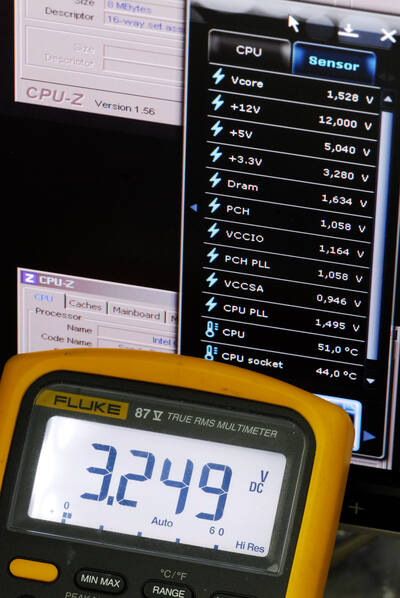
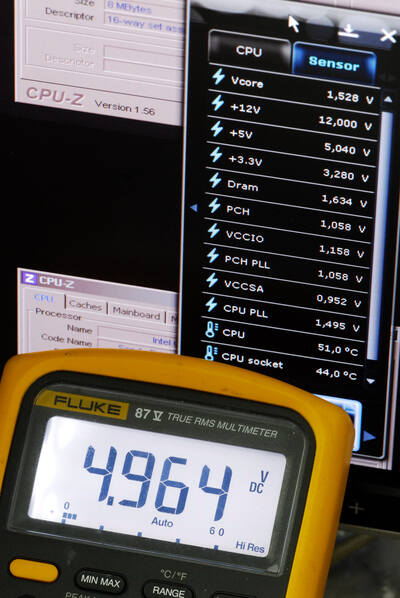
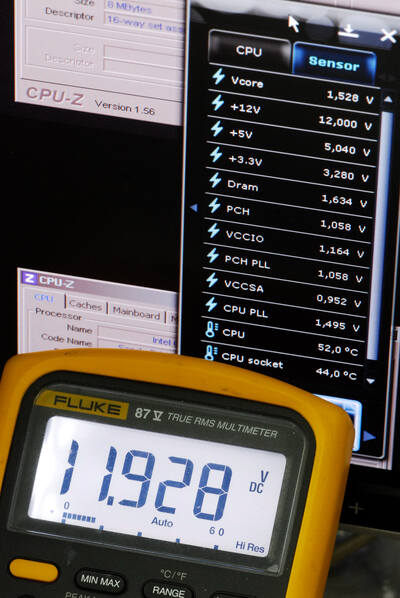
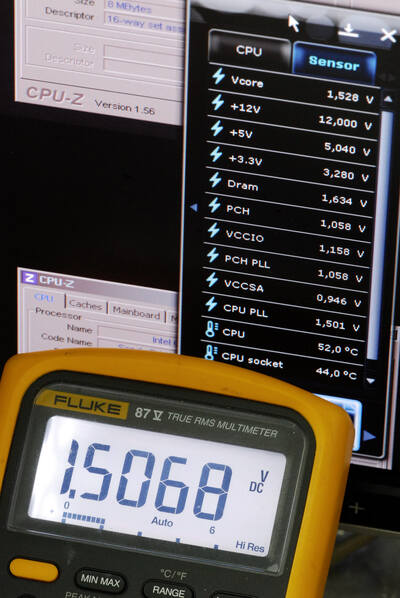
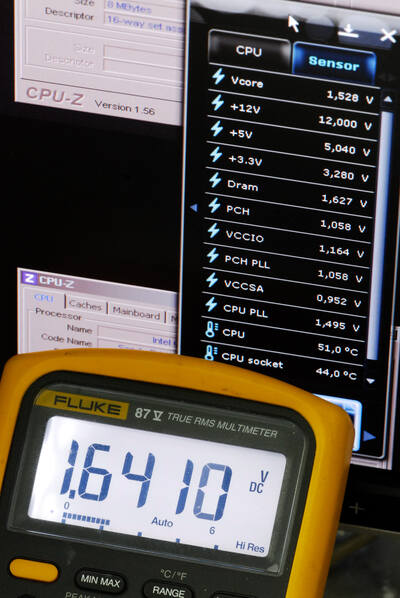

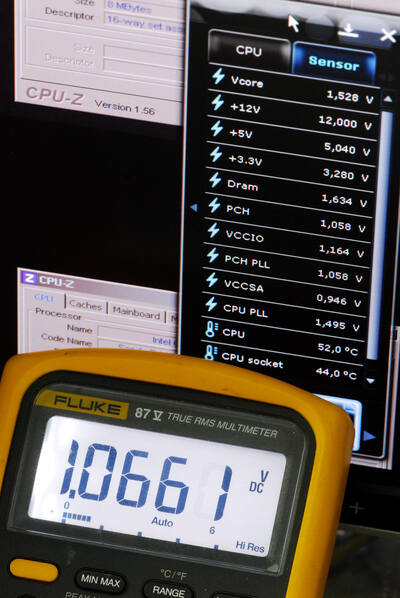
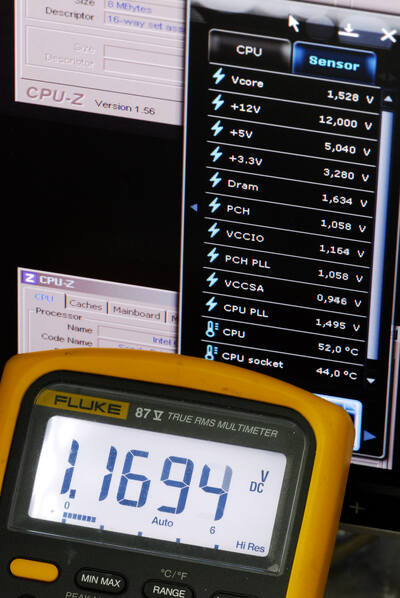
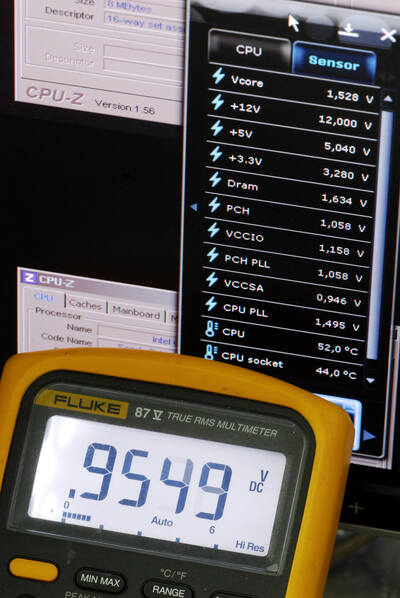
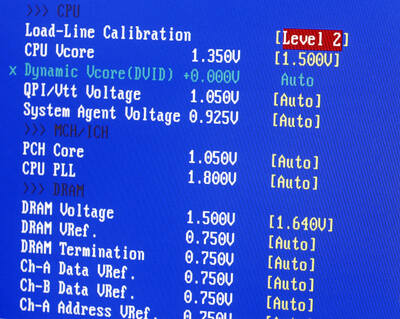
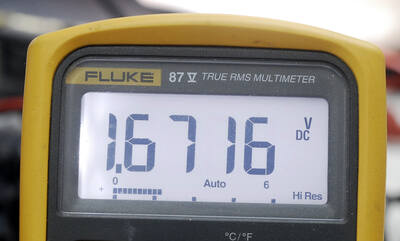
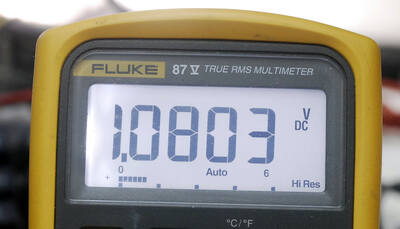
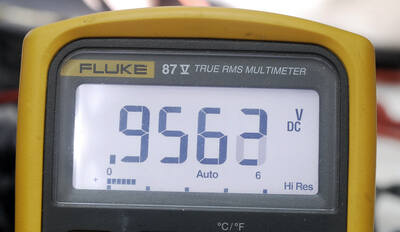
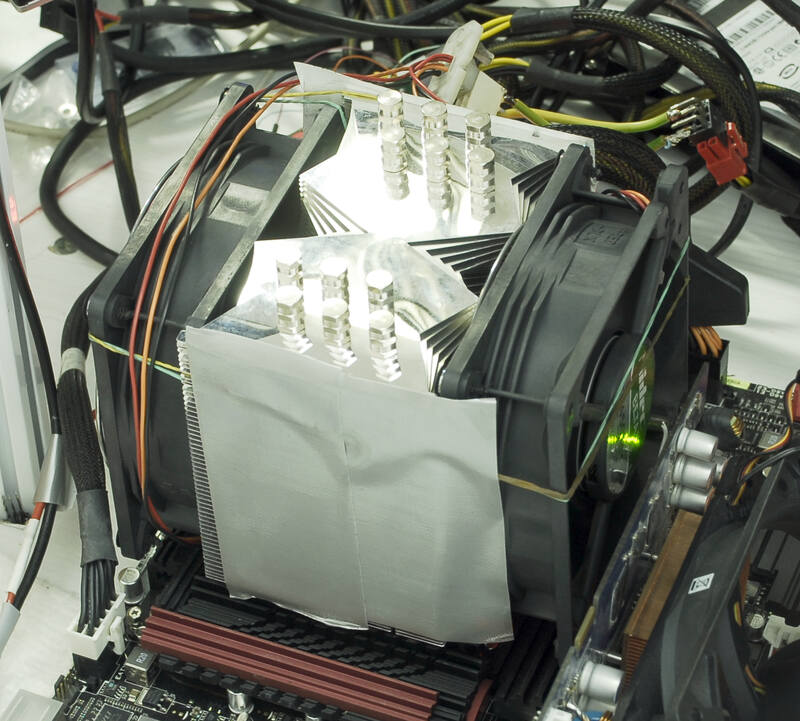
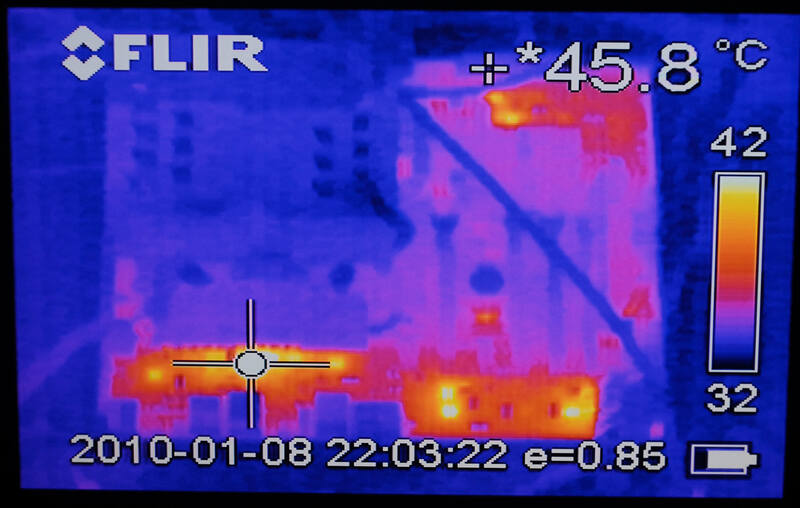
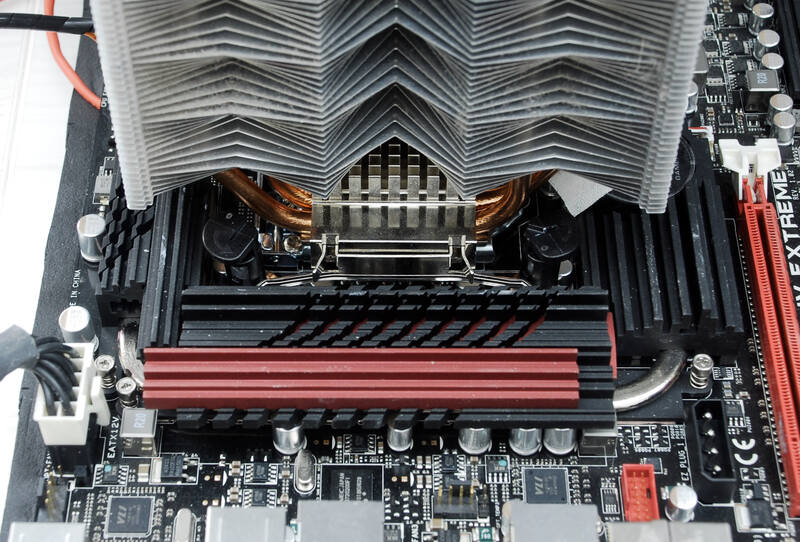
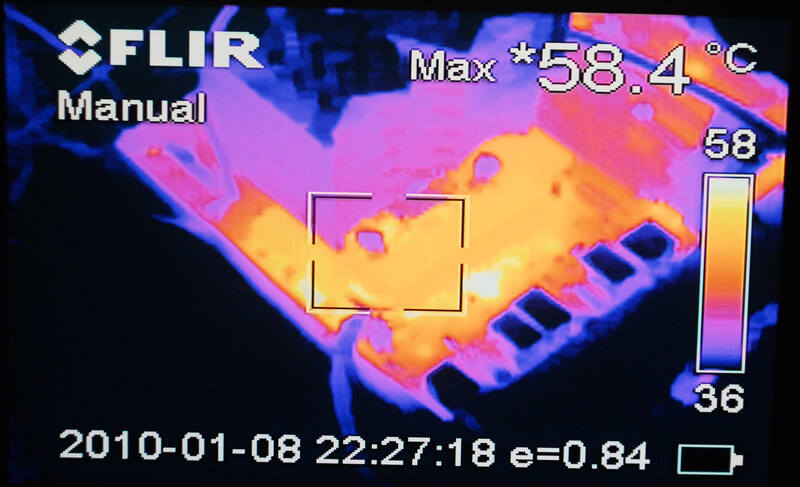
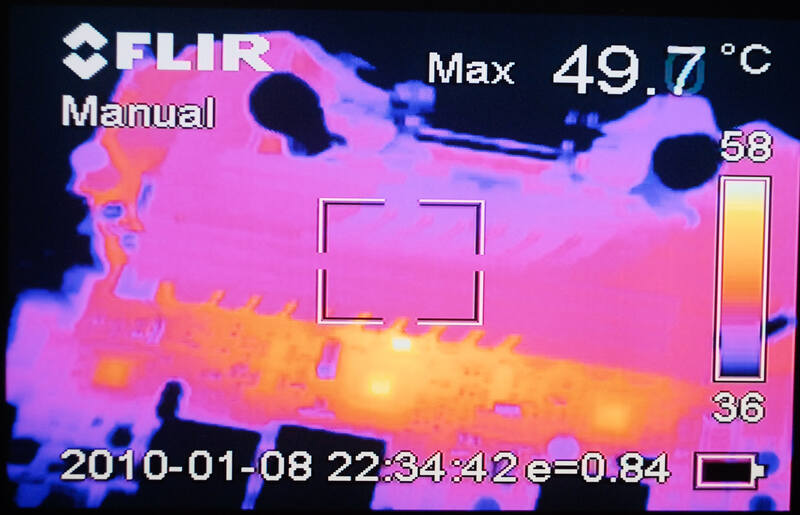
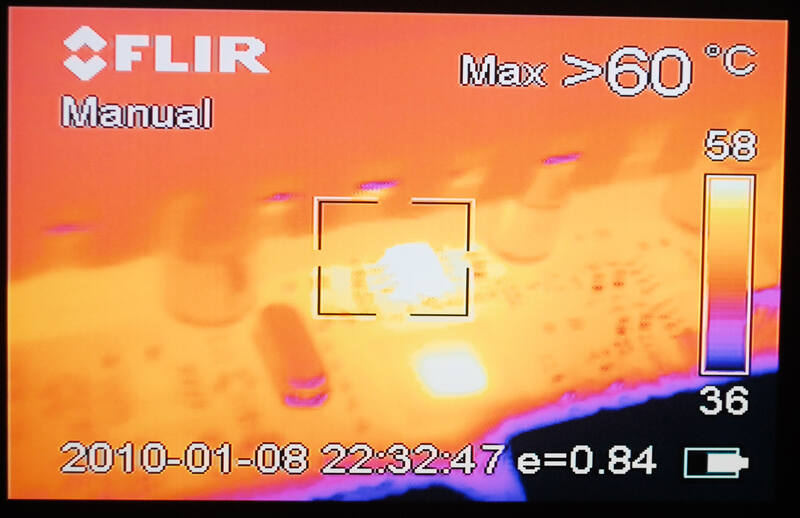
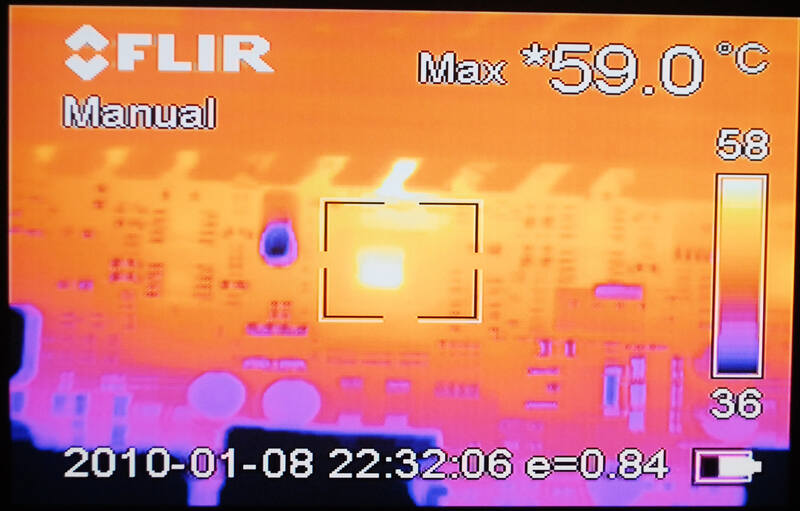
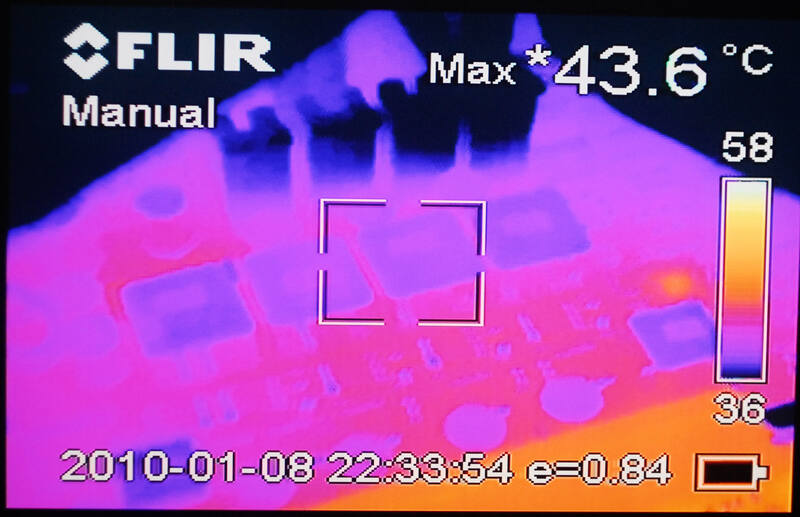
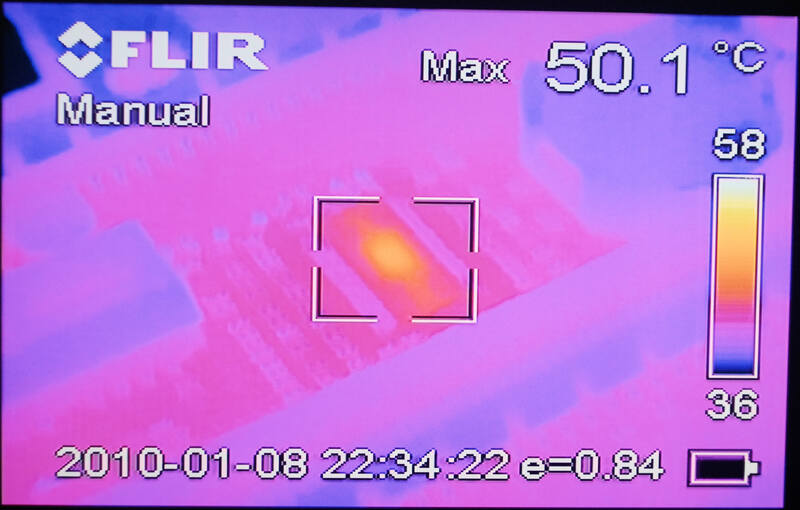
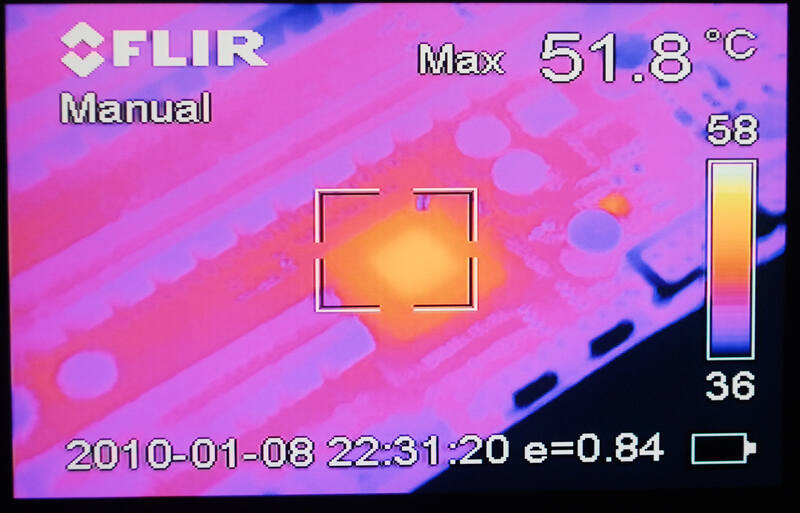
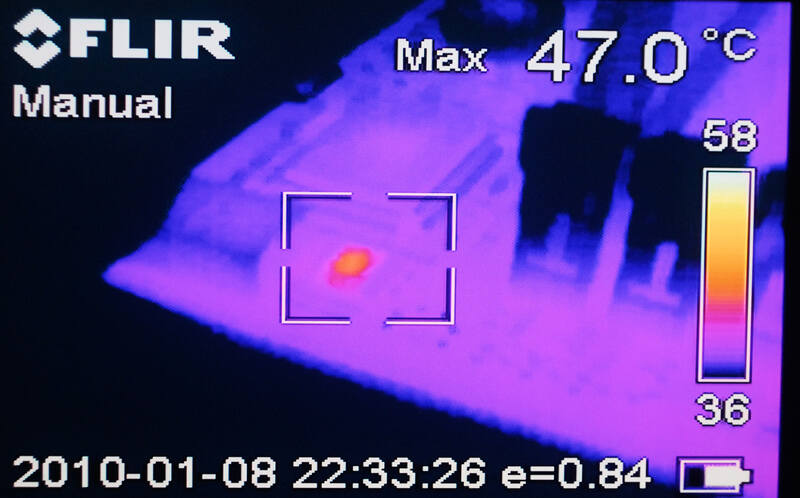
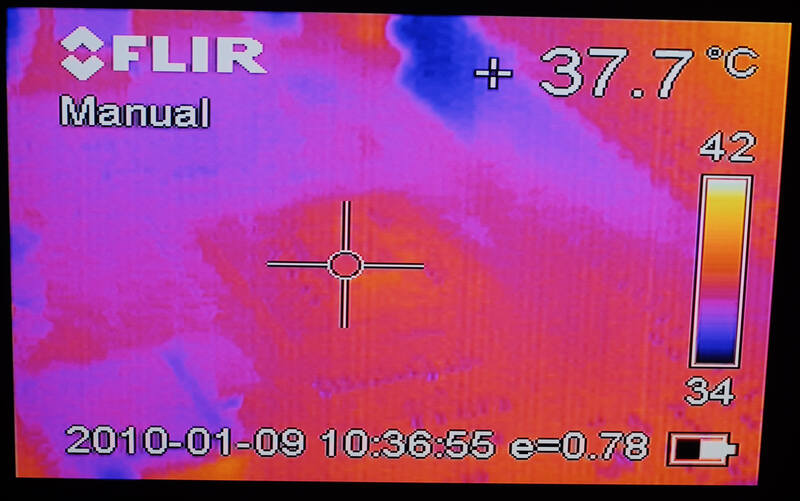
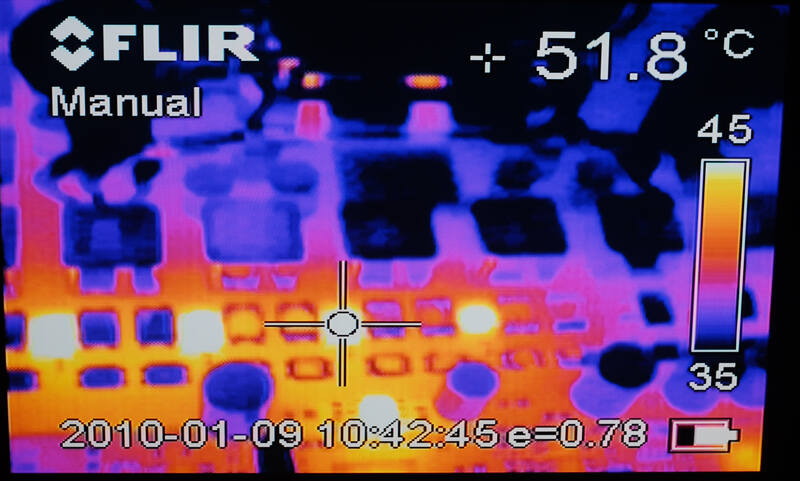
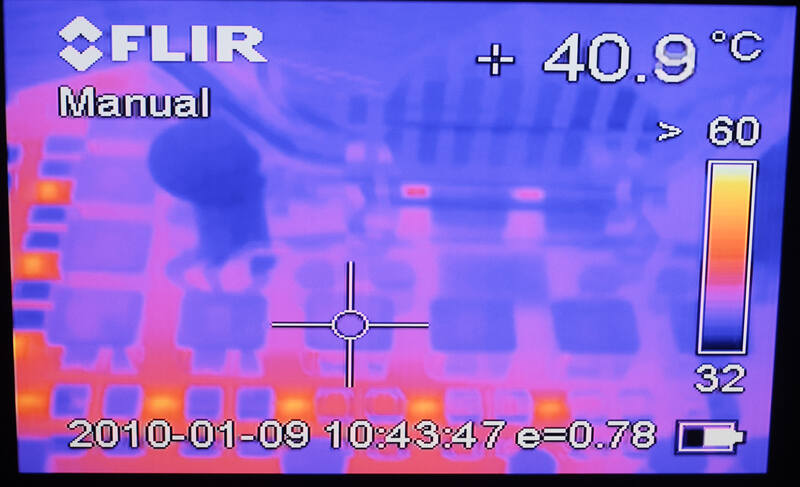
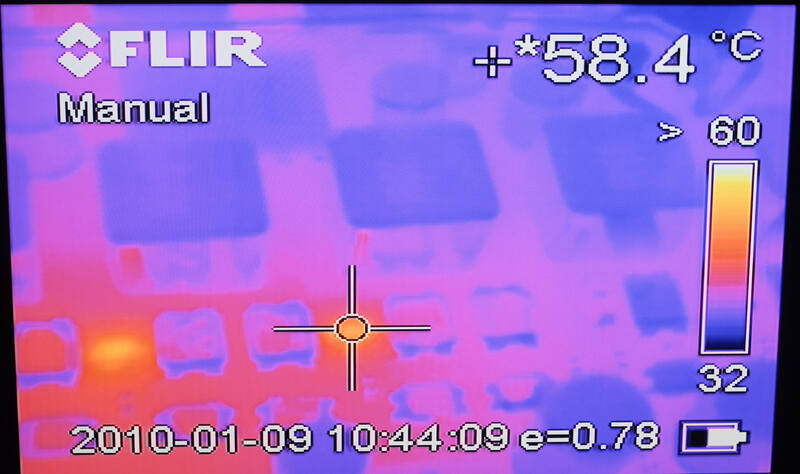
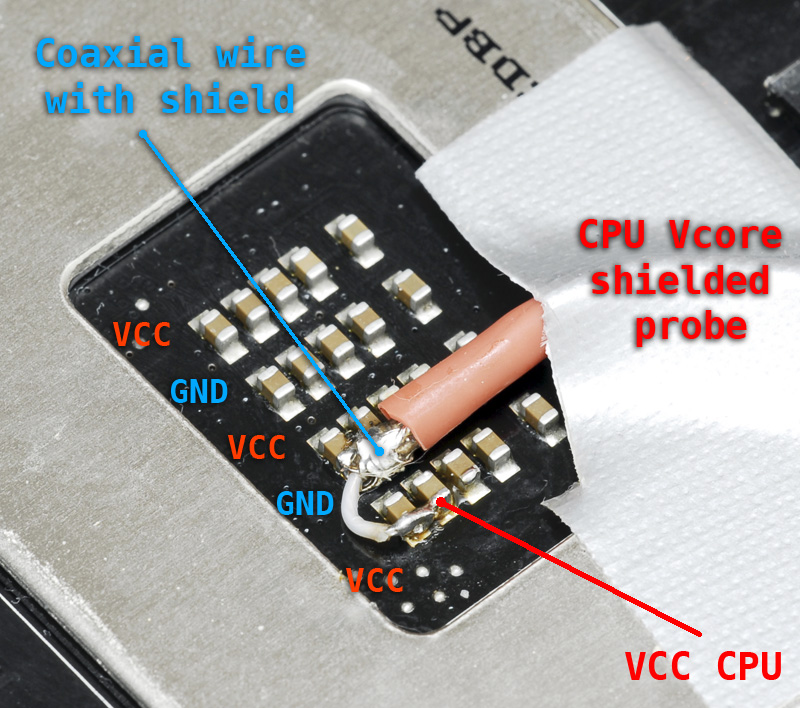
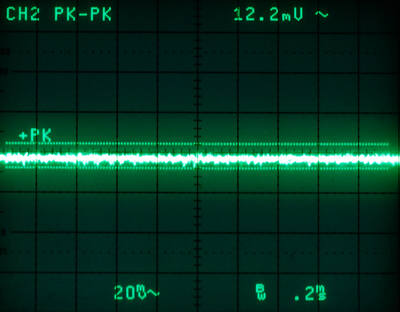
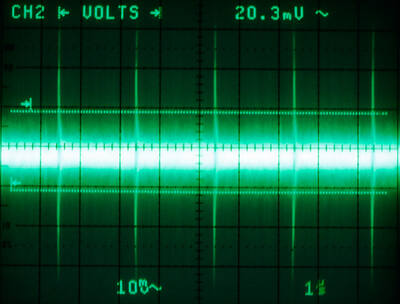
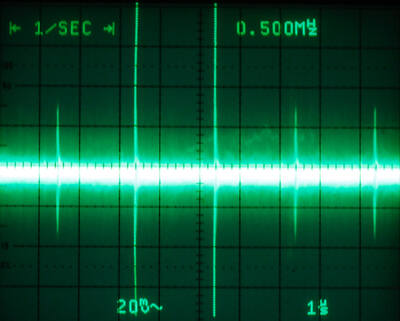
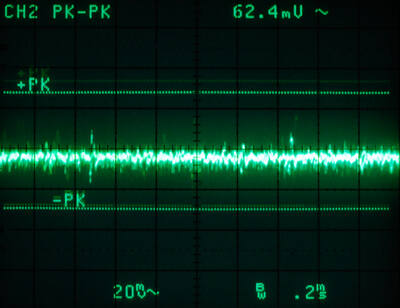
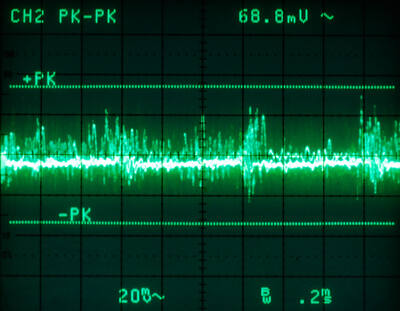
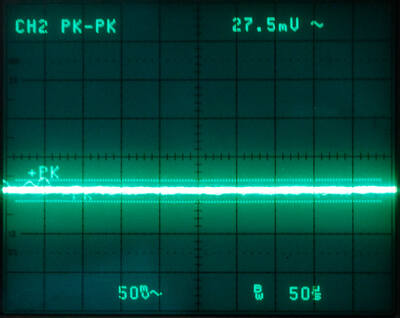
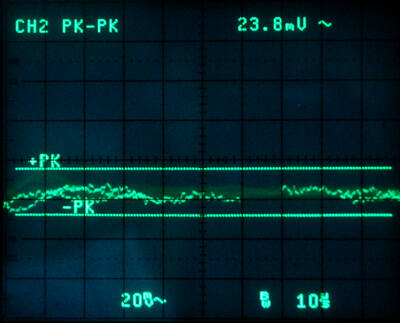
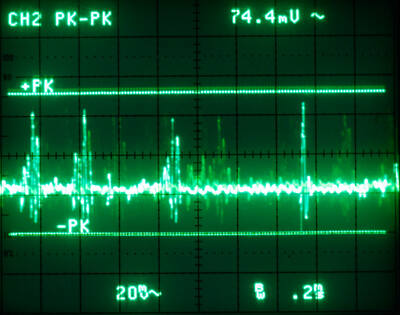
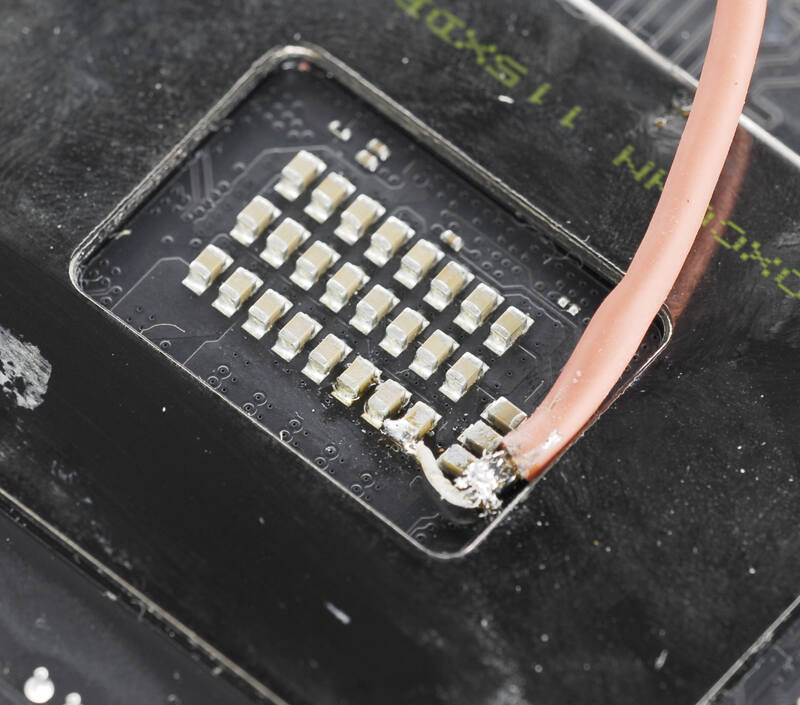
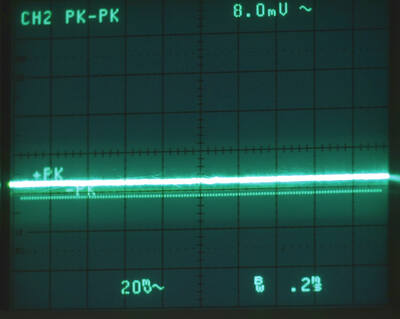
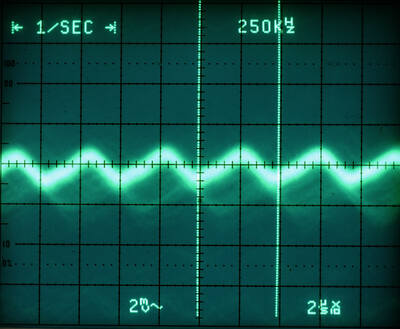
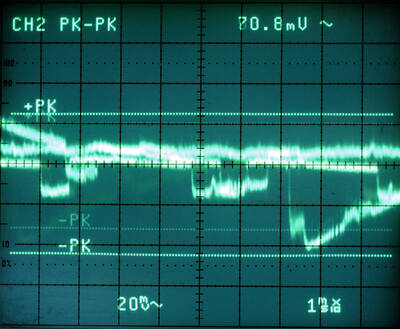
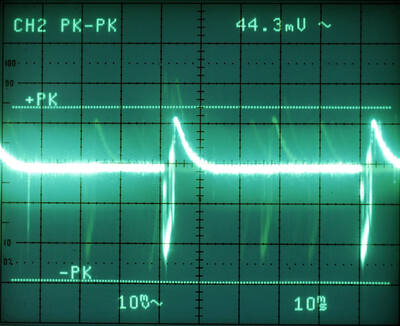
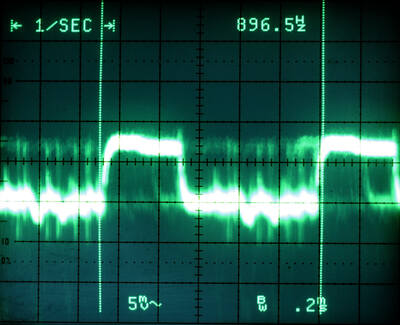
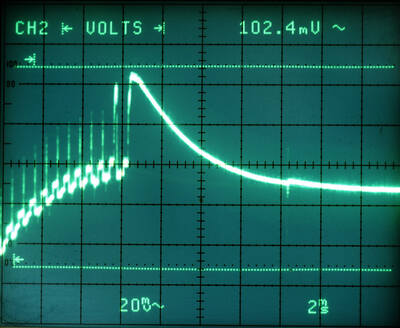
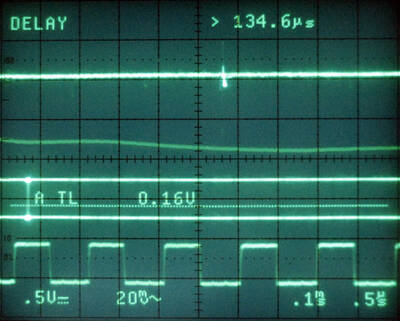
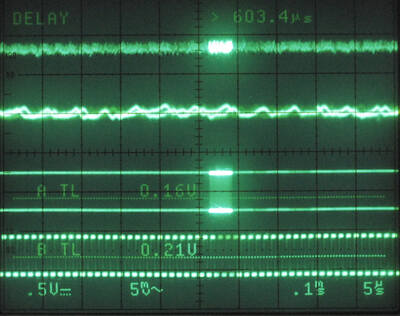
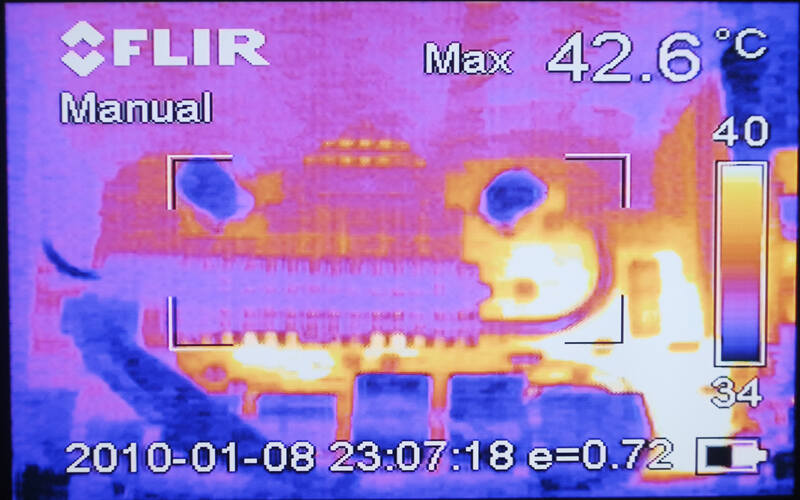
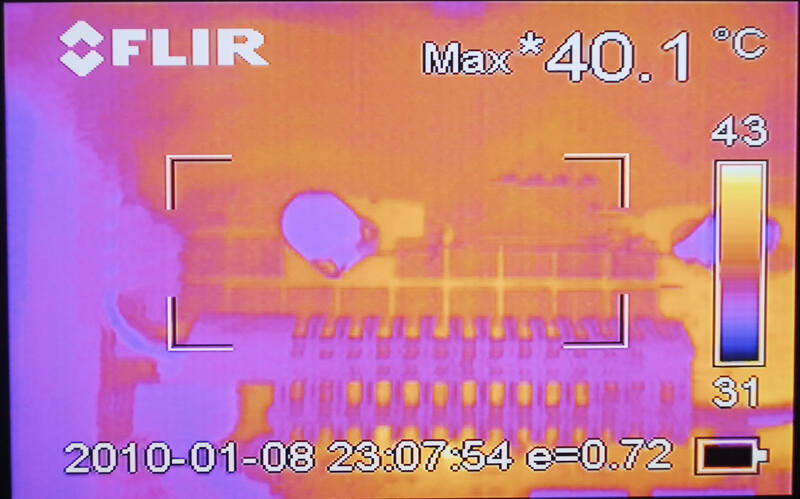
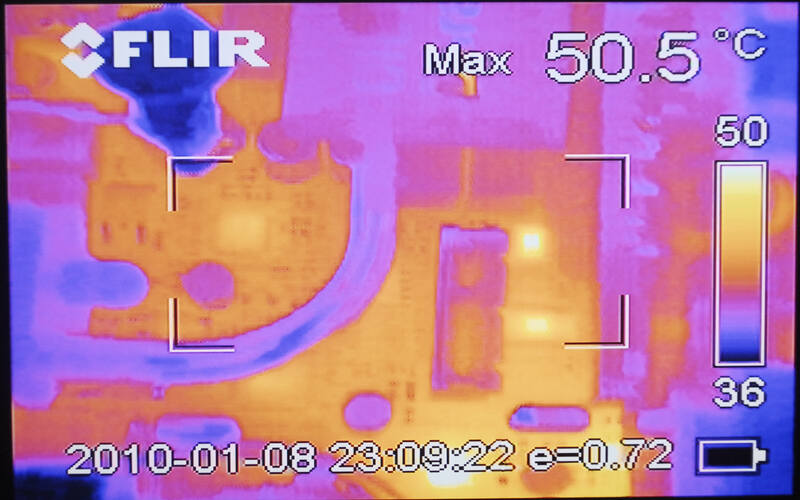
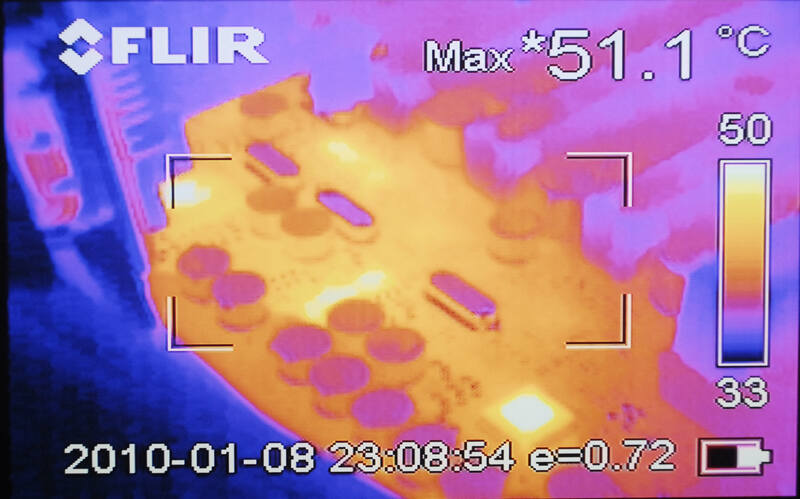
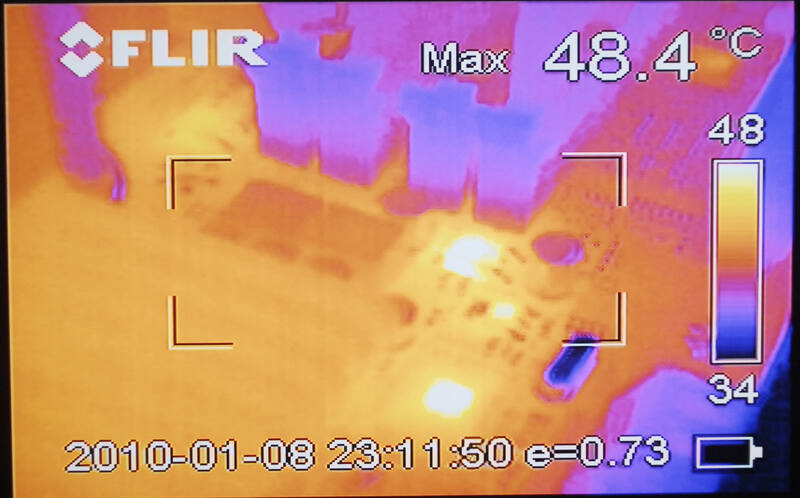
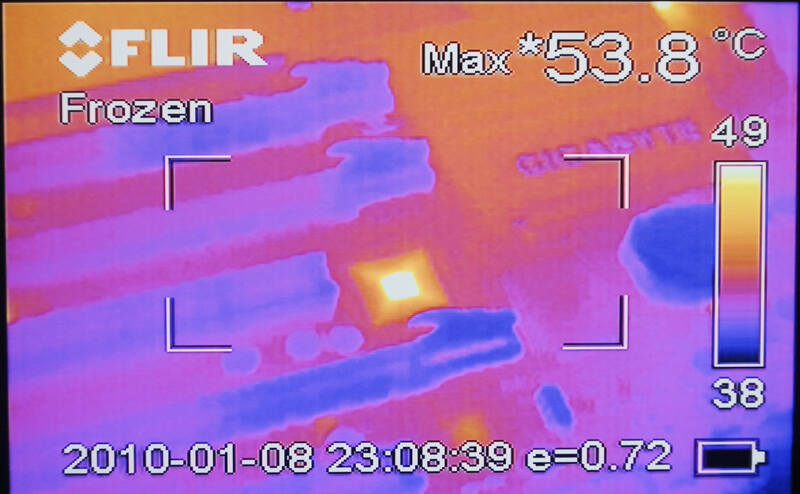
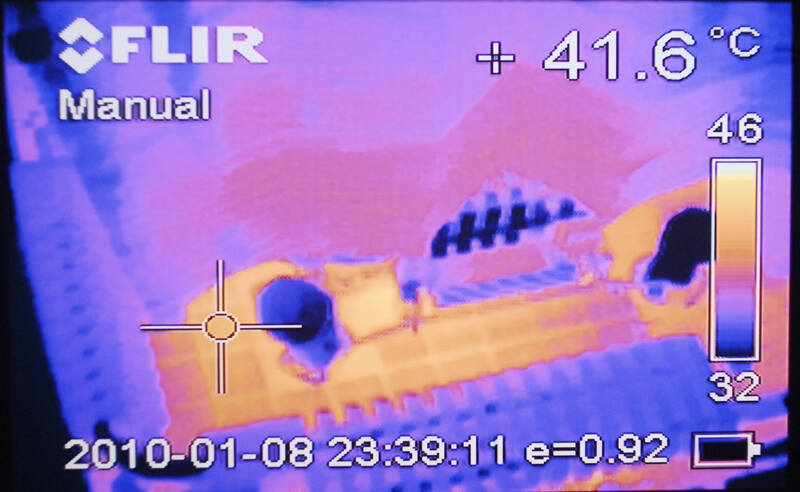
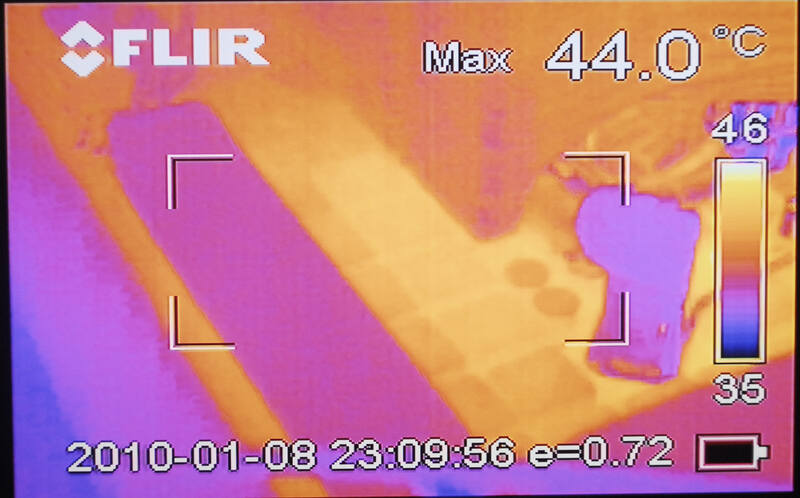
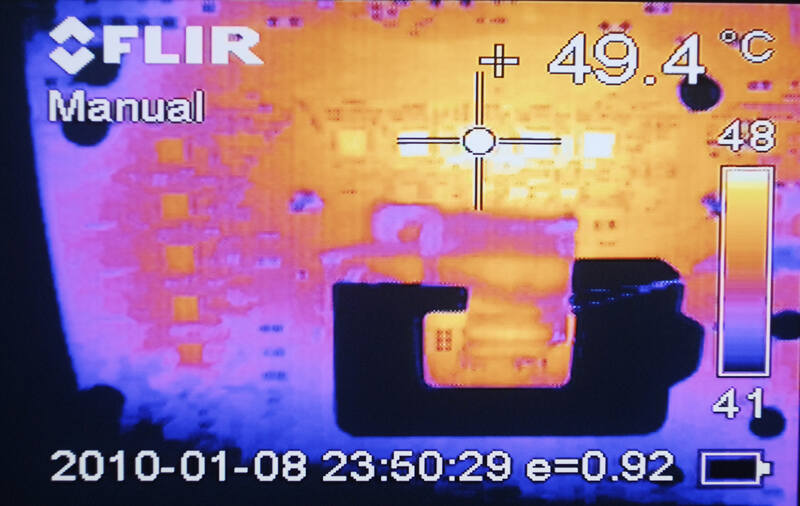
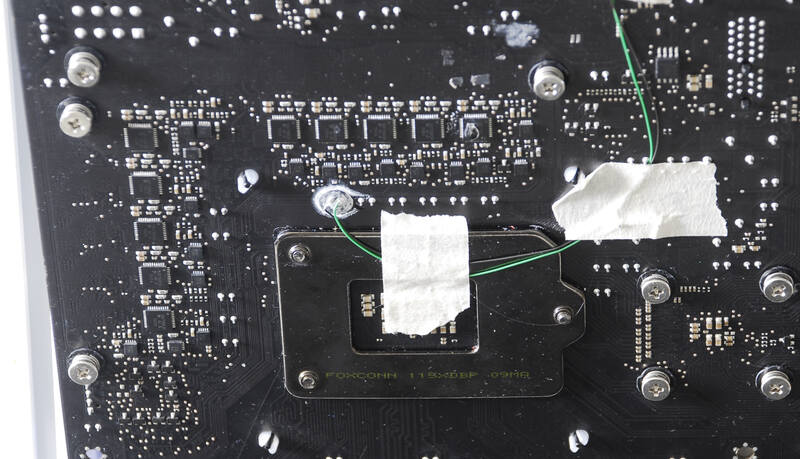
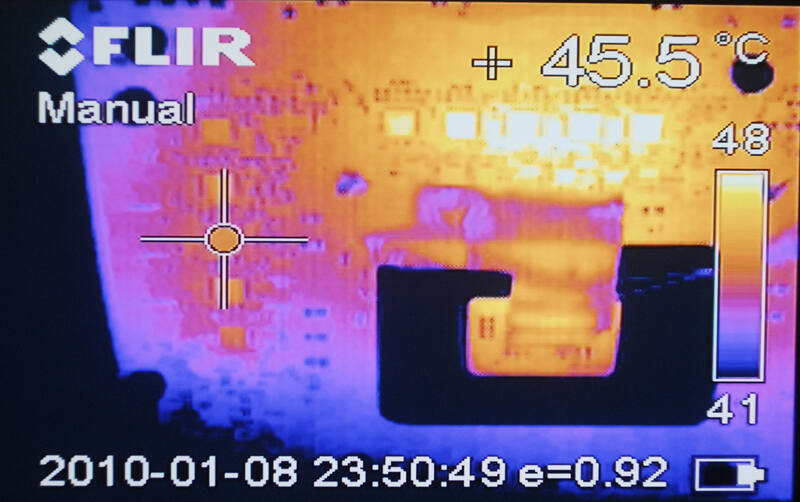
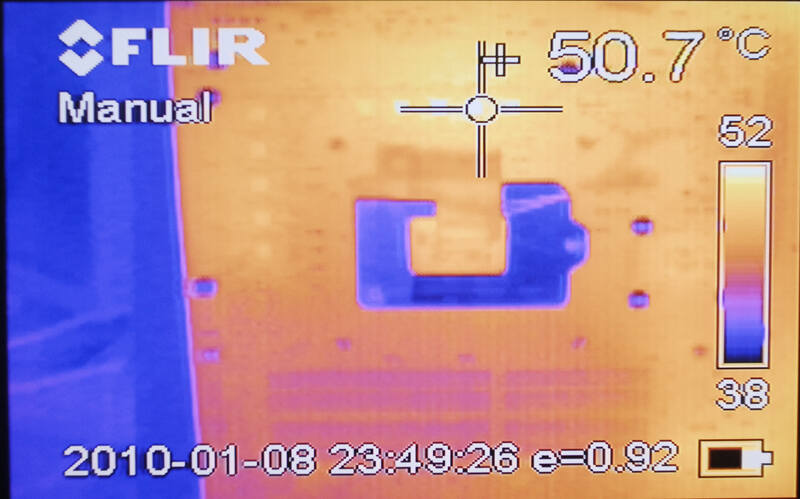

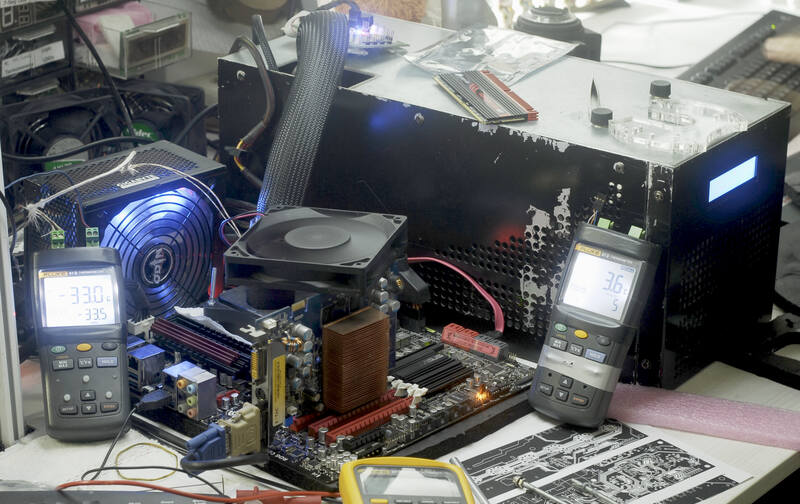
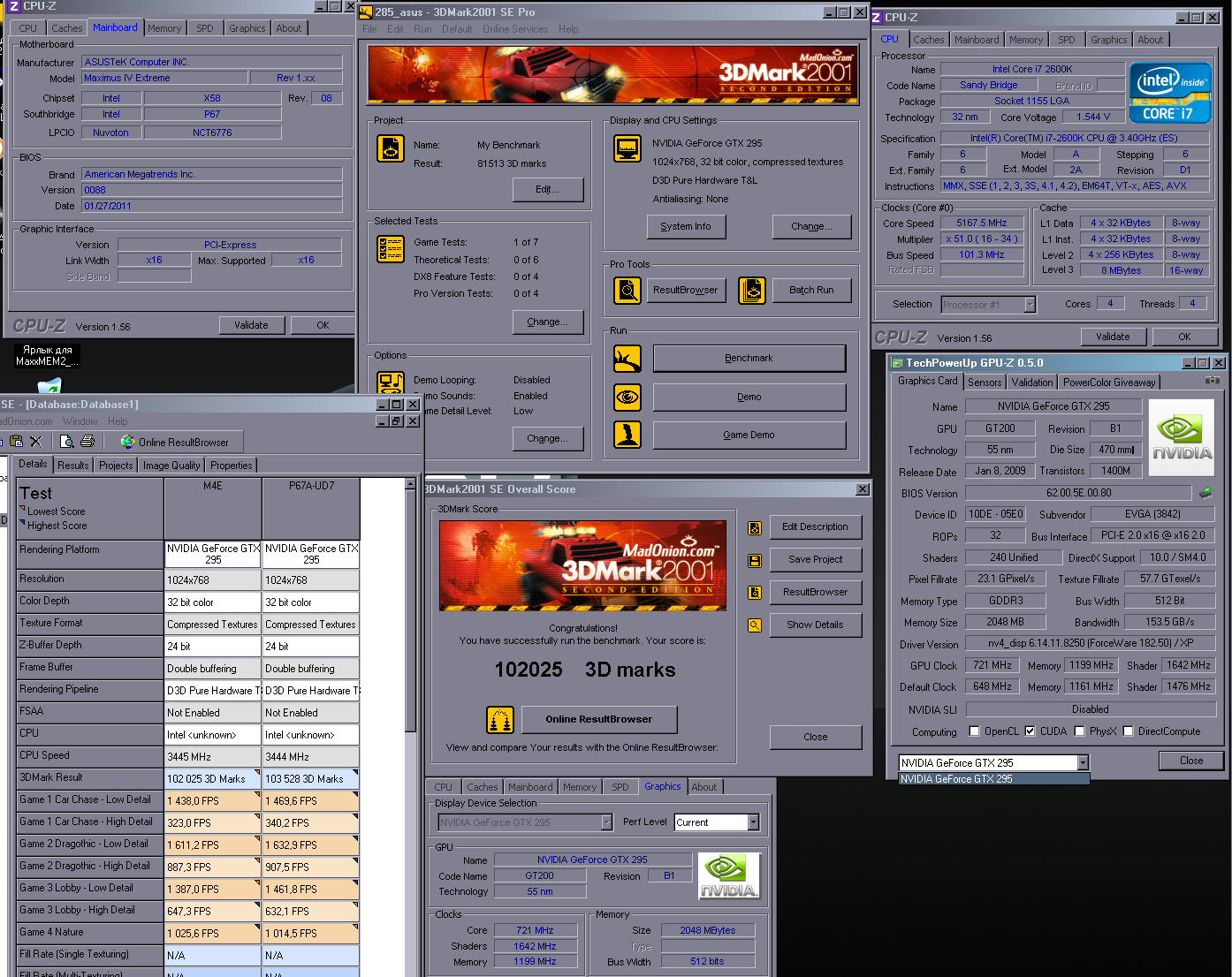
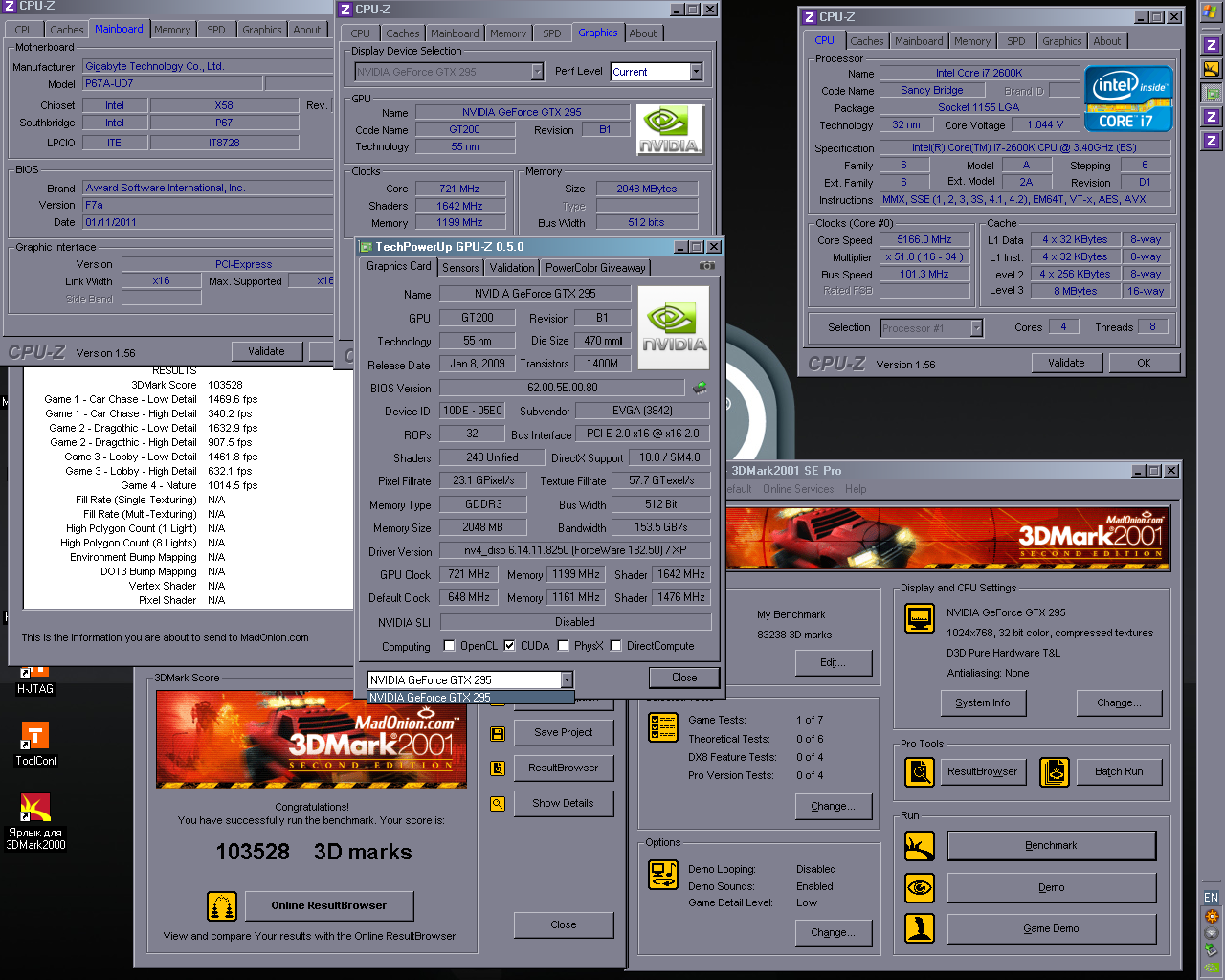
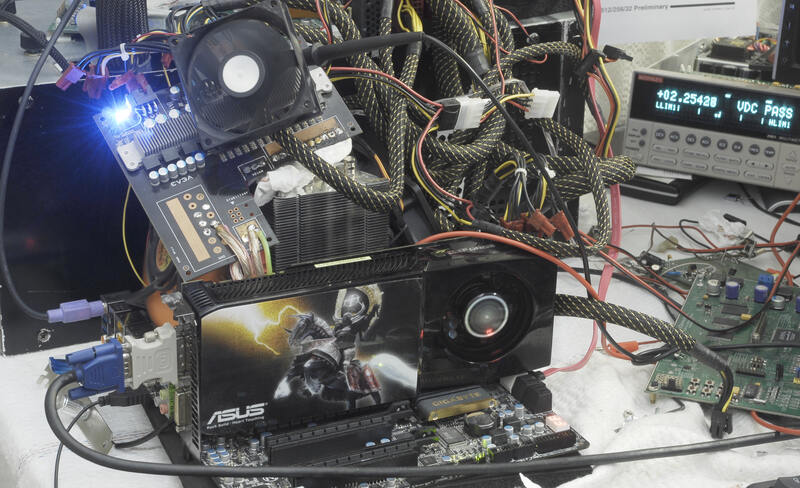
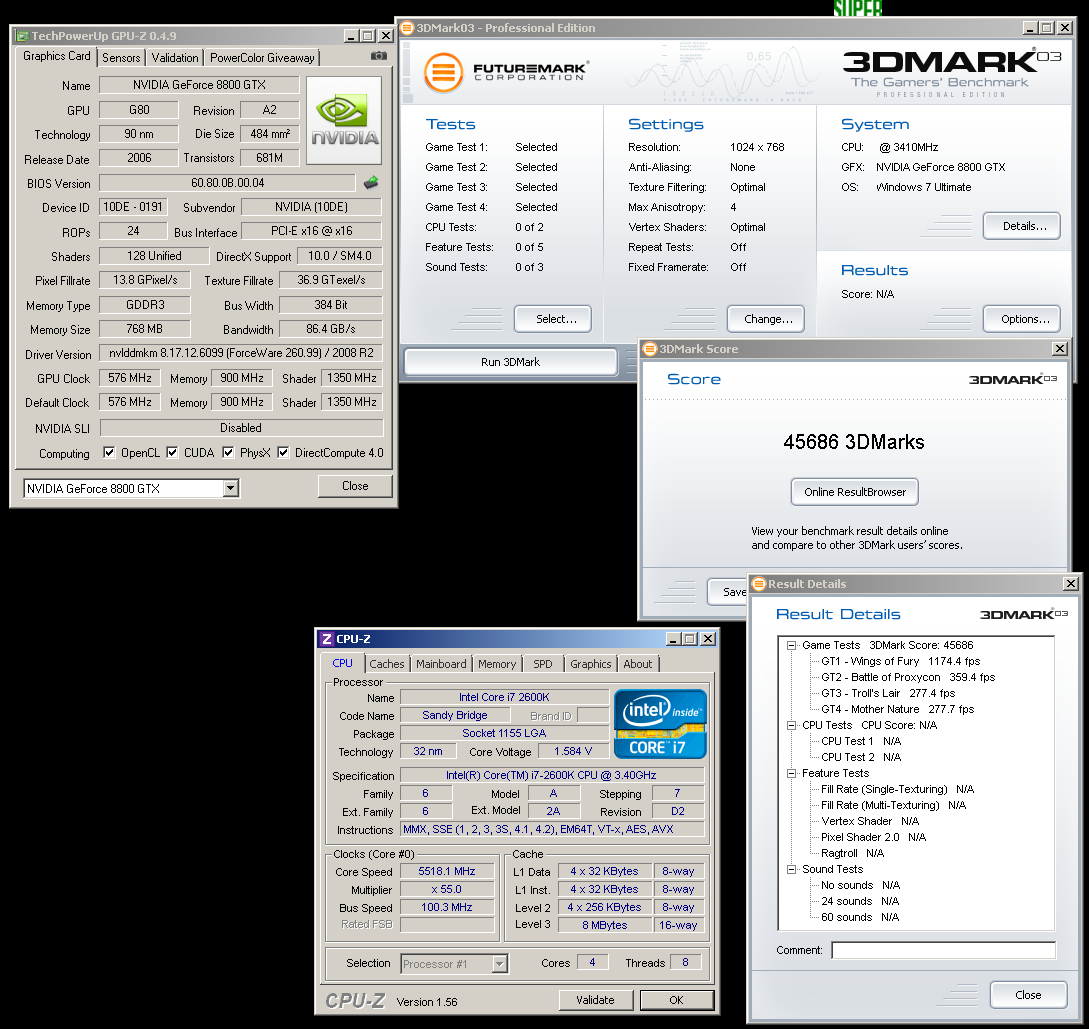
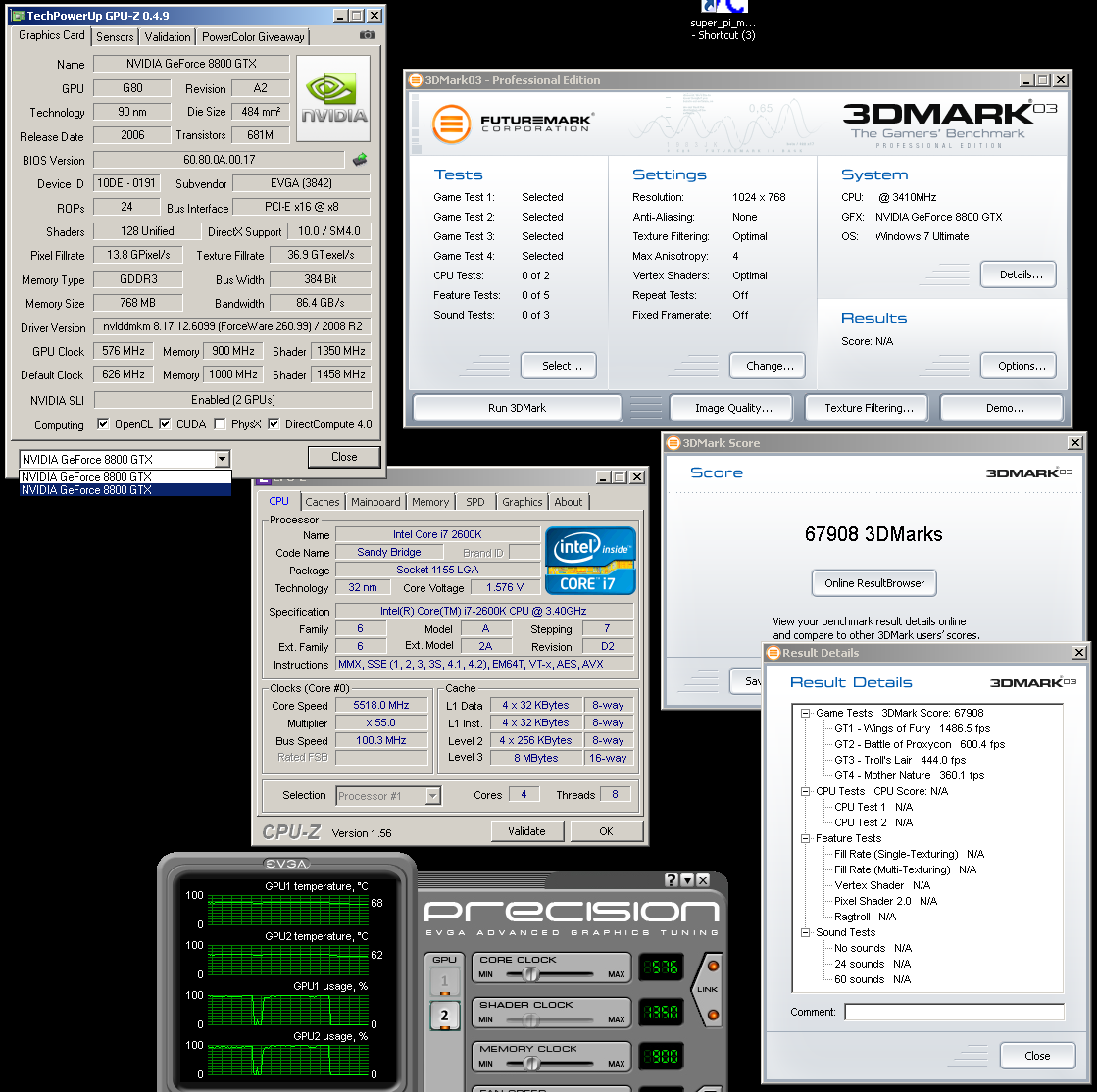
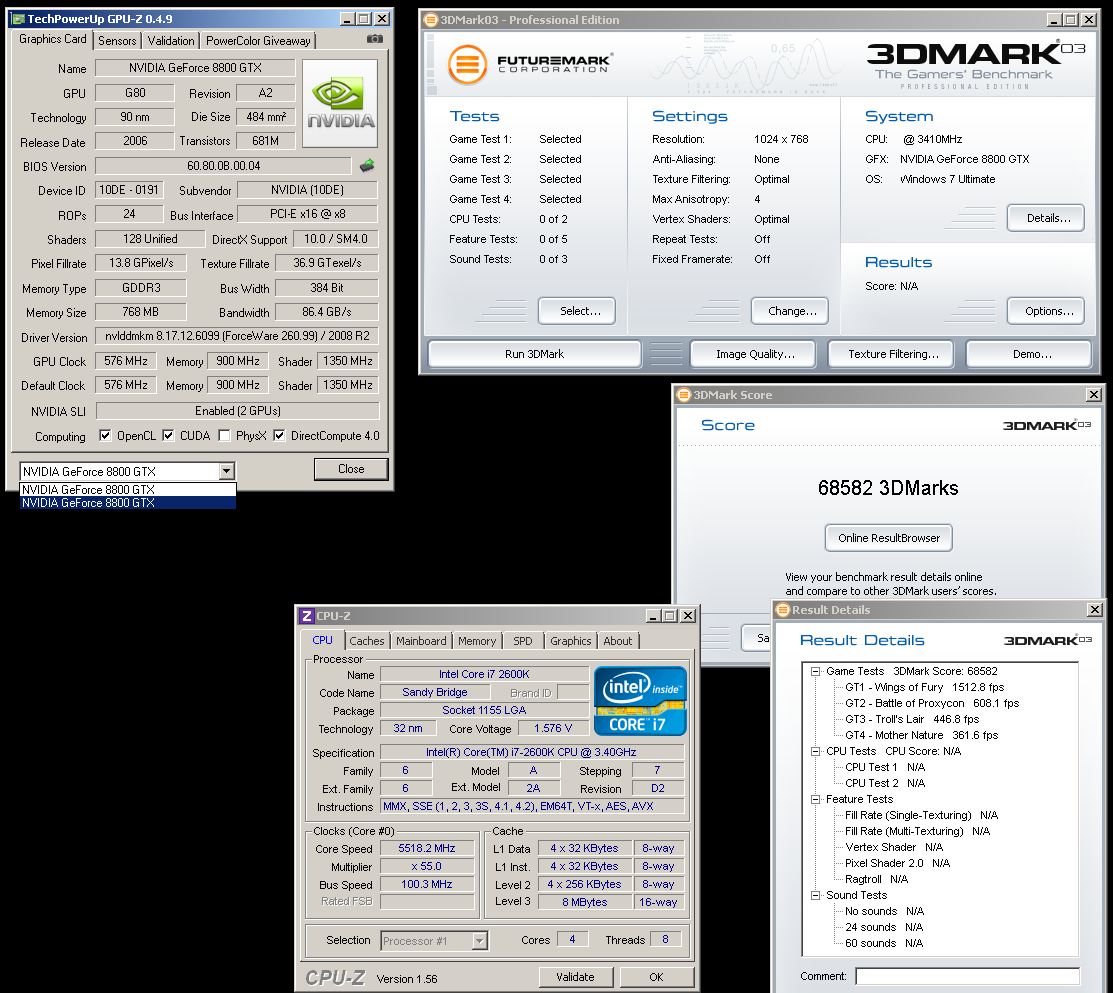
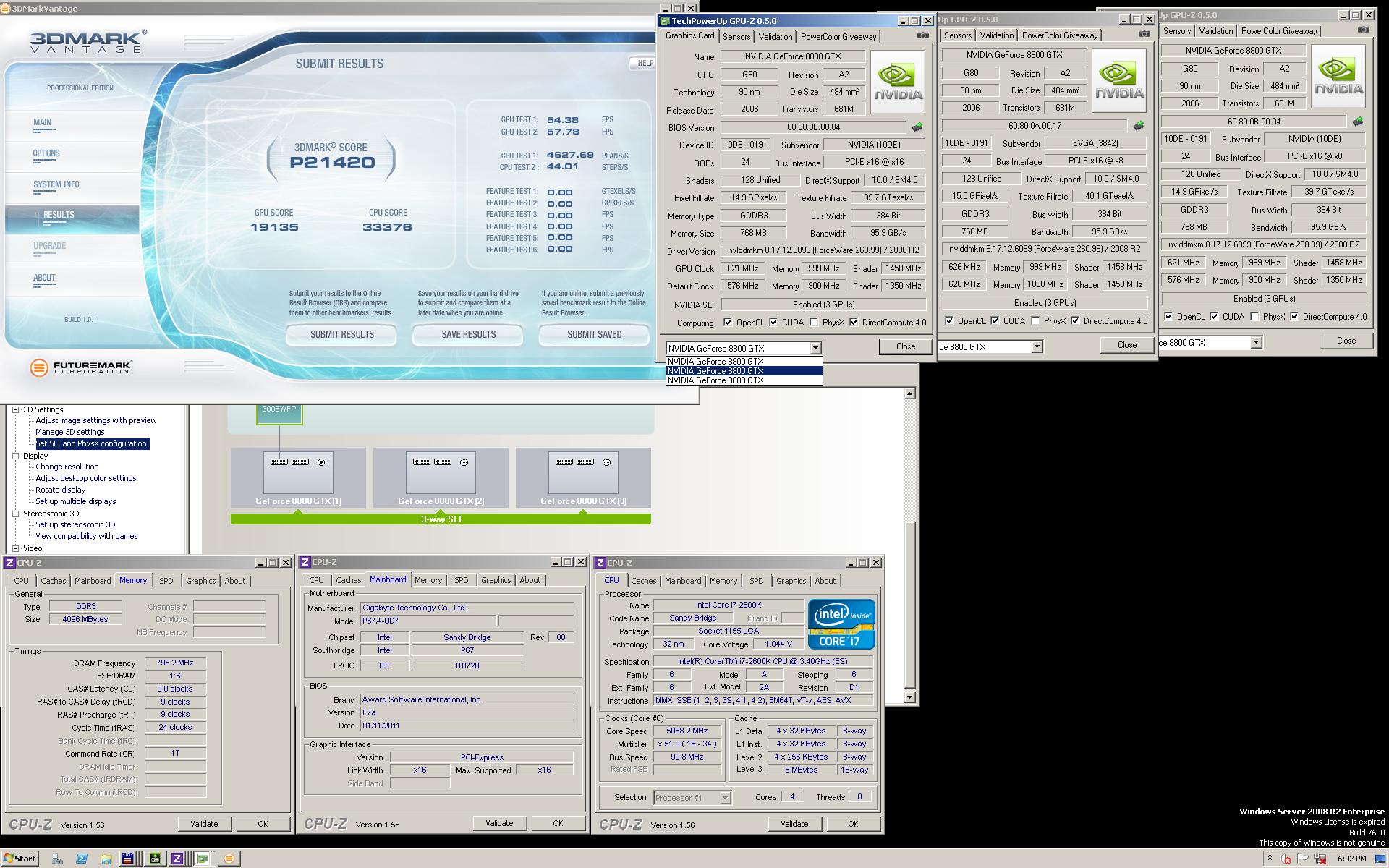

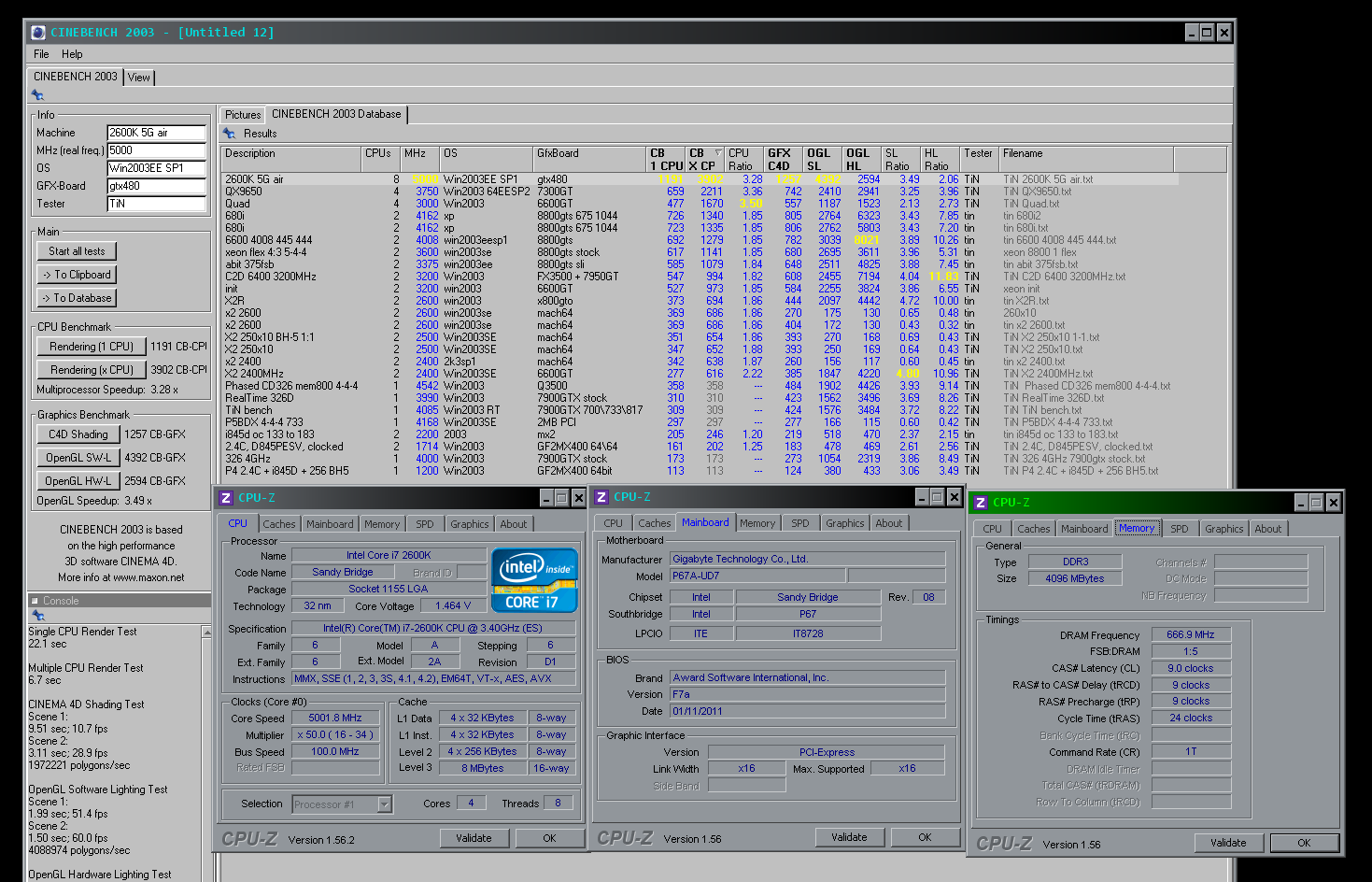









 Linear Mode
Linear Mode

